2 Volumes
Constitutional Era
American history between the Revolution and the approach of the Civil War, was dominated by the Constitutional Convention in Philadelphia in 1787. Background rumbling was from the French Revolution. The War of 1812 was merely an embarrassment.
Personal Passions
My own personal short list; eight decades in retrospect.
Advanced Placement Gains Attackers and Defenders
An abridged extract of what

|
| Naomi Riley |
Naomi Schaefer Riley writes in the October 6, 2006 Wall Street Journal, follows:
"... The rat race complaint is that AP courses put a strain on students-too many facts to memorize, too much reading. And teachers complain, too. They say that AP courses force them to teach to test.. .
"Conceived in the early 1950's by educators from three prep schools (Andover, Exeter, Lawrenceville) and three universities (Harvard, Princeton, Yale),

|
| SAT's |
the AP curricula demand that students acquire real knowledge. Unlike the SAT's which measure mental aptitude, the AP tests ask students hard questions on the history exam require students to place quotations and documents in their correct context and to identify events, dates, historical figures, and ideas....
"Why? Because college increasingly offers a crazed social experience at the expense of rigorous study. But high school does better: It is often the last time that students are forced to learn something...."
Ms. Riley goes on to imply that colleges have deteriorated into little more than binge drinking hide-outs. Since I am 62 years away from personal observation of the college scene, I can't comment or even know for certain whether things have changed much in this respect.
But on the topic of resistance to Advanced Placement, Ms. Riley explains enough to justify comment. The SAT revolution, which took place at the same time and much the same place, effectively converts the old college entrance based on genetic probabilities into the new college entrance based on mental aptitude. Since raw mental aptitude seems to be in oversupply, the final decisions are winnowed by extra-curricular success. It would appear to me that the extra-curricular success industry is threatened by proofs of academic achievement. And more importantly, since grade inflation has destroyed the value of high school transcripts, the AP courses serve as a surrogate for effective nerdiness and bookishness. In other words, the AP tests are a threat to the entitlements created by the SAT, one of which is grade inflation.
If grade inflation is under attack, that puts more pressure on high school teachers to teach, school districts to raise their salaries, and taxpayers to pay. Before that happens, there will be pressure to cut the cost of sports and other extracurricular expenses.

|
| Bill Gates |
And, come to think of it, if more nerds are admitted to prestige colleges, perhaps their social inadequacies will reduce college socializing that now appears to alarm, Ms. Riley. For proof of that trade-off, I enclose a photograph of some overachievers of 1978, two of whom dropped out of Harvard because it was unchallenging. Mr. Gates is lower left, Mr. Allen lower right.
Deconstructing Higher Education, Home Design, and Medical Care.
.
Philadelphia Chromosome
Every Spring for the last 185 years, the Franklin Institute has honored the most distinguished scientists alive; Franklin would certainly be proud of the Institute named after him. In recent years, many awards were combined into two categories, the Bower Awards and the Benjamin Franklin gold medals. Unlike the Nobel Prize, the Franklin Institute Medals are not given for eminence in a designated field of science, but rather are given out by a hard-working committee of scientists who ask themselves What are the really hottest scientific fields at present, and then ask panels of international referees Who is most eminent in that field? The awards thus effectively avoid fields that are temporarily stale and static, by being unrestricted in advance to particular fields. The approach of searching for the greatest minds rather than greatest achievement may well lead to the same award, but the method of choice seems more harmonious with the spirit of Benjamin Franklin, who not only excelled in the field of electricity but actually invented that whole field. The subtle shift in emphasis seems to have been well received; this year's Awards Banquet was over-subscribed before the invitations were printed, and a capacity audience of 800 attended a superb reception, dinner and audio-visualized live ceremony. Actually, the ceremony extends for a whole week, with scientific symposia and in-person meetings with high school students designed to interest them in science.
This year eleven scientists, the most prominent of whom were Bill Gates and Peter Nowell, received the medals. We'll get to Bill Gates in a while; for the present, let's concentrate on Peter Nowell, who invented the Philadelphia Chromosome. What's that?

|
| The Philadelphia Chromosome |
Well, from 1921 to 1955, it was generally held that people, members of the human race, contained 48 chromosomes in every cell in their bodies. The chromosomes were thought to contain the genetic code governing our biological construction, explaining the difference between us and fruit flies, which for example only have four chromosomes per cell. After painstakingly examining the appearance of the chromosomes in different people and in cancer cells, it was then generally held that cancers never seemed to have any genetic abnormality. After all, the chromosomes of cancer cells looked exactly like those in normal tissue: Forty-eight chromosomes, never differing in cancers, so go look somewhere else for the cause of cancer. Unfortunately, the state of scientific development fifty years ago can be summarized by noting that about that time it then became established we really only had 46 chromosomes, not 48. As for cancer, the M.D. pathologist Peter Nowell, then noticed in 1956 that a patient with chronic myelogenous leukemia had an extra translocation on one particular chromosome, giving it a funny shape. This translocation was furthermore present in every single other leukemic cell suggesting that one cell had somehow undergone a single mutant change, and all the rest were its descendants. At least in CML (chronic myelogenous leukemia), it suddenly looked as though the cause had been found since the further study revealed the same was true of just about everyone who had CML. At first, it was felt that while maybe the cause of this particular type of cancer had been found, every other cancer might still be caused by something else. Not so. From believing no cancers were genetic in origin, Peter Nowell started us on the path of now being confident all cancers have a genetic cause.

|
| Dr. Peter Nowell |
How could we all have been so wrong; can't scientists even count up to 46? No, as a matter of fact, in 1955 it was pretty hard. If we couldn't even tell how many of them were there, it's obvious the comment they all looked alike wasn't worth very much. As Peter shyly admits, his discovery was a result of being trained as a physician rather than as a life scientist; he knew what leukemia looked like, but at that time he didn't know very much about chromosomes. It happens chromosomes spend most of their lives expanded into tiny filaments too small to examine under the microscope. But as they enter the stage of cell division called metaphase, those filaments shorten and thicken up, becoming a lot easier to examine. As a pathologist, Peter didn't bother to stain his slides in dilute salt solution, but just washed them in tap water. The tap water had caused the cells to swell up and burst; those that happened to be in metaphase dumped their stubby chromosomes out where they could be stained and looked at. Simple. Doesn't everyone wash slides in tap water?
So fifty years ago, the general question of what causes cancer finally narrowed down to the right sort of specific question. Thousands of scientists, spending billions of dollars from the National Institutes of Health, sharpened the focus of their search considerably. It certainly looks as though someone is going to carry the search the final step, pretty soon. However, the fact that fifty years of intensive study still hasn't quite found the answer is an illustration of how fiendishly difficult the search really is. Each year that might have been spent futilely avoiding genetic searches would have added one year more before the answer was finally found. By the way, why is it called the Philadelphia Chromosome? In 1955 it had been decided by the scientific community that every genetic abnormality would be named after the city in which it was discovered. Dr. Peter C. Nowell of the University of Pennsylvania and the late Dr. David Hungerford of the Fox Chase Cancer Center were the joint discoverers, so obviously it was entirely a Philadelphia discovery; at that time it had been made a custom that genetic abnormalities were named after the city where they had been first found.
It would be a mistake to conclude that nothing new has been discovered in half a century of research. It has been established that not only Myelocytic Leukemia but essentially every cancer starts with some genetic abnormality, which triggers the expression of "mini RNA". These abnormalities then apparently express a cancer-producing action by triggering an abnormal factor in the cell signaling system, called tyrosine kinase. Drugs with the effect of paralyzing that enzyme have been found to be curative in 95% of cases of chronic myelogenous leukemia, and some other forms of lymphoma. We're certainly getting closer, step by unexpected step, to the answer. In fact, we may be getting even closer to a point where drug research can jump to seeking cures without precisely defining how the cancer was caused. After all, if cancer is caused by a chain of cellular events, it may not matter where you break the chain. That realization appeared with, first aspirin and then the statin drugs, for treating heart attacks and strokes, even though we are still not completely clear about how atherosclerosis is produced. Meanwhile, the death rate from hardened arteries has dropped by half.
It wouldn't be right to omit mention of Peter Nowell's Quaker heritage. Although he isn't a Quaker, his mother was a Matlack, a direct descendant of Timothy Matlack, the Haddonfield Quaker who was the scribe for the first writing of the Declaration of Independence. Sitting in silent Quaker meeting, polishing and simplifying one's message before delivering it, is very good training for a habit of simple, direct thought. As Dr. Nowell phrases it, he is a chronic "lumper" of ideas, when so many scientists are content to be "splitters". Splitting complexity into its essential components is a useful approach. But somewhere, someone has to get to the heart of the matter.
The Hospital That Ate Chicago (1)

|
| George Ross Fisher M.D III |
One evening in 1979 my visiting son, puzzled by health financing, asked me to explain. A decade of asking myself the same question led to the prompt reply that there seemed to be two central problems, both of them man-made. It's axiomatic in our family that man-made problems can have man-made solutions.
I believed you adequately understood health care financing if you understood the price reduction which hospitals give to subscribers of Blue Cross but not to subscribers of their competitors, and if you also understood the income tax dodge which the Federal government gives to salaried, but not to self-employed people who buy health insurance.
He asked how in the world these two subsidies were defended, and I told him. He then asked how these monopoly-inducing subsidies related to other weird quirks of health finance, and I told him that, too. He listened quietly for thirty minutes, and then exclaimed, "Wow. That's really the Hospital that Ate Chicago!"
So he went to bed, while I stayed up and wrote a short fancy for the New England Journal of Medicine, called, "The Hospital That Ate Chicago". Next morning I polished it a little and sent it off to the editor. Within a few days, it was accepted. Six weeks later it was in print.
Health Savings Accounts
The legislation removes the hampering restrictions of the 1995 Law. What follows is a brief outline of the main features of the HSA/MSA clause in the 2003 law,
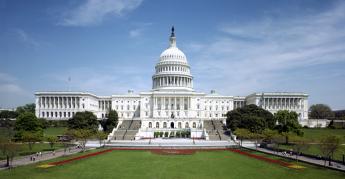
|
| U.S. Capital |
as published by the main authorizing committee, the House of Representatives, Committee on Ways and Means. From this point forward, more specifics of the program will probably be written by the Executive Branch and published in the Federal Register. The Ways and Means Committee will continue to exercise oversight authority, however, in conjunction with the Senate Finance Committee. As a consequence, statutory modifications of the program are likely to appear in future annual budget reconciliation acts, or else in any new Medicare amendments. The legislative route map becomes more understandable when it is recalled that Medicare itself is considered to be an amendment (Title XVIII) of the Social Security Act.
Committee on Ways and Means
Medicare Prescription Drugs, Improvement And Modernization Act of 2003
Health Savings Accounts (HSA's)
Lifetime savings for Health Care
Working under the age of 65 can accumulate tax-free savings for lifetime health can needs if they have qualified health plans.
A qualified health plan has a minimum deductible of $1,000 with $5,000 cap on out-of-pocket expenses for self-only policies. These amounts are doubled for family policies.
Preventive care services are not subject to the deductible.
Individuals can make pre-tax contributions of up to 100% of the health plan deductibles. The maximum annual contributions are $2,600 for individuals with self-only policies and $5,150 for families (indexed annually for inflation).
Pre-tax contributions can be made by individuals, their employers, and family members.
Individuals age 55-65 can make additional pre-tax "catch up" contributions of up to $1,000 annually (phased in).
Tax-free distributions are allowed for health care needs covered by the insurance policy. Tax-free distributions can also be made for the continuation coverage required by Federal law (i.e., COBRA), health insurance for the unemployed, and long-term care insurance.
The individual owns the account. The savings follow the individual from job to job and into retirement.
HSA savings can be drawn down to pay for retiree health care once an individuals reach Medicare eligibility age.
Catch-up contributions during peak savings years allow individuals to build a nest egg to pay for retiree health needs. Catch-up contributions allow a married couple to save an additional $2,000 annually (once fully phased in if both spouses are at least 55.
Tax-free distributions can be used to pay for retiree health insurance (with no minimum deductible requirements), Medicare expenses, prescriptions drugs, and long-term care services, among other retiree health care expenses.
Upon death, HSA ownership may be transferred to the spouse on a tax-free basis.
Contain rising medical costs- HSA's will encourage individuals to buy health plans that better suit their needs so that insurance kicks in only when it is truly needed. Moreover, individuals will make cost-conscious decisions if they are spending their own money rather than someone else's.
Tax-free asset accumulation- Contributions are pre-tax, earnings are tax-free, and distributions are tax-free if used to pay for qualified, medical expenses.
Portability- Assets belong to the individual; they can be carried from job to job and into retirement.
Benefits for Medicare beneficiaries- HSA's can be used during retirement to pay for retiree health care, Medicare expenses, and prescription drugs. HSA's will provide the most benefits to seniors who are unlikely to have employer-provided health care during retirement. During their peak saving years, individuals can make pre-tax catch-up contributions.
Chairman Bill Thomas Committee on Ways and Means 11/19/2003 12:56 PM
Medicare/Health Savings Accounts Legislation
Three Revolutions at Once, Maybe Four
The rise of the Tea Party movement in 2010 reopens a lifetime question in my mind. What was the American Revolutionary War all about; surely, a tax on tea isn't outrageous enough to go to war over, is it? It only aggravates curiosity to learn this particular law passed by the British Parliament, actually lowered the price of tea.
A somewhat different importance for the 21st Century is, of all the dozens or even hundreds of little civil wars that have popped up in the past two centuries, this American one seems to have had the biggest impact on the thoughts and behavior of the civilized world. The French Revolution comes close, but we meant to speak of persuasive influence on serious minds, not merely bloodiness and lasting grievance. Here are three suggestions, maybe four.
In retrospect, we can see the outlines of three major revolutions, coming together at the end of the 18th Century. The first is the Industrial Revolution, which had its beginnings in England around the city of Manchester. That was a region of major Quaker concentration, many of whom migrated to William Penn's social experiment in seeing what peace could do. The Industrial Revolution flourished in Great Britain far more readily than in France, and in a sense more than in America. But of the three major countries, America had the largest amount of unsettled land and the greatest natural resources of the three major countries. America was able to think bigger and broader, necessarily requiring broad support from an immigrant population. Diversity was often later to prove a mixed blessing, but in the Industrial Revolution it was vital.

|
| Dissent, French Style |
The second major revolution taking place at that time concerned the place of property in the life of every citizen. Up until that time, the King owned all the land and could redistribute it to suit his political needs. What critically mattered was not who formerly owned the land, but rather what was the latest King's latest word on who owned it right now. The American system gravitated to the notion that when the King or any other owner sold the land, it was no longer his; we now think that's quite self-evident. Each successive owner can sell it to his neighbor or bequeath it to his heirs, and at that moment it is no longer his, either. This idea of private property spread throughout the world, but in America, it was a clean sweep. Adopting the rather brutal rough justice of the frontier, the Indian prior ownership just didn't count. They had sided with the British in our revolution and were insistently resistant to assimilation. And anyway, Pope Nicholas in the 13th Century had established the notion of first discovery, which applied to Christians, only, and so Indians didn't count. Fair or unfair, this was going to be the way it was, from that point forward from 1787 when the Constitution was enacted. The longer the situation lasted, the more unlikely it became that it would ever change. America had so much land and so little coinage, that land itself became a sort of monetary standard. The particular American advantage was there was so much land that early settlers and landed gentry could not monopolize it; from meaning land at first, property soon meant any valuable possession. No King, particularly not George III, was going to take this away from the whole population on this side of the Atlantic. England could do as it pleased with its land and its King. If we needed Independence to preserve a general right to hold private property, plenty of men were willing to die to achieve it. And the whole Western world soon followed our example.
The third revolution was the one you read about, Lexington and Concord, Bunker Hill and the Tea Act. That whole chain of events chronicles how America came to be Independent but somehow fails to explain why we wanted Independence. The Industrial and the Property revolutions explain it better, but such theorizing would certainly mystify the Revolutionaries themselves.
And finally, one begins to wonder if we aren't toying with a reversion to the ideas underlying monarchy when we examine some currently widespread views. There's a notion going about that everybody owns everything, which if carried to an extreme means no one owns anything. When you can notice people who live on the 70th floor of a Manhattan apartment building, proclaiming a right to tell Alaskans whether or not they can drill for oil, you behold this monarchy of the many. And when you see prosperous educated adults shouting at rallies, you can see Alaskans, for example, want to tell New Yorkers to mind their own business. This land, they seem to say, isn't everybody's at all, it is mine.
It never really was entirely the King's, either. The King was a single person, sometimes a rather brutal one who wasn't likely to tolerate advice from his subjects. At times of crisis, somebody has to make a decision, any decision, and act on it. But most of the time, kings seemed to be in the position of that Czar. The one who said, "I don't rule Russia. Ten thousand clerks rule Russia."
Haddonfield Blooming Outdoors, Year-Round

|
| Haddonfield Christmas Lights |
DECEMBER. The last of the outdoor blooms disappear at Thanksgiving. The last fall-blooming (Sasanqua) camellias, witch hazels and surviving rose bushes finish up, and the glorious maple trees have lost their fall foliage. In a warm year, the lawns remain green through Christmas, while the town lights up its trees and shrubs, and doorways, and lamp posts. The church carillon plays carols; it gets dark early. Old timers tell you of once riding to Moorestown for Christmas in a one-horse open sleigh. Winters are definitely getting warmer, but it's unclear whether this has to do with global warming or just hot water from a million drain-pipes warming up the rivers. The Philadelphia water department reports it extracts seven times as much water from the river as flows past from Torresdale to Marcus Hook. Each drop must go through seven sewage systems during that transit. Warmer weather or not, one gets to wishing the home oil delivery services would post their prices on big signs, the way gas stations do. Price controls are abhorrent, but sometimes the competitive marketplace could use a little help.

|
| Holly Berries |
JANUARY'S Ice and snow, as sung by Flanders and Swann, make the nose and fingers glow. There's not much blooming outdoors along the Atlantic coast north of Cape Hatteras in January, although the holly berries are still colorful, especially when surrounded by a thin dusting of snow. There is at least one Haddonfield family, the Coffins, who make a hobby of growing a wide variety of holly variants, many of them quite hard to grow. For some semblance of outdoor color in January, however, red berries on a tall bush show up best.
In my family, we also resort to Christmas cactus for flowers at this time of the year. It's a house plant, however, and it's a succulent, not a true cactus. In spite of the name, it only reliably blooms at Christmas if you force it to. Our formula is to stop watering it at Hallow E'en and resume watering at Thanksgiving, keeping the plant in semi-darkness during that period. Even so, it's more naturally a January bloomer, and among the easiest indoor plants to maintain. Our Christmas cactus plant is in its fourth generation within our family, with three living generations maintaining descendants of the original plant. Grandma's Christmas cactus is a living link within the family, helping us to remember who we are.

|
| Early Sprouts |
FEBRUARY'S slush and sleet, sing the Englishmen, freeze the toes right off your feet. Toward the end of the month in one of Haddonfield's milder winters, you can expect the snowdrops to flower around the base of dormant dogwood trees. These bulb plants are not very showy except for being the only thing in bloom, so plant a lot of them in clusters in the early fall, using loose soil so they can naturalize. Generally speaking, rabbits leave them alone, and in a week or so they are joined by Snowdrops, Glory of the Snow, and FSquill. The leaf fall from dogwood trees from is so dense you probably find bare ground around the base of the tree; needs something to brighten it up. The red holly berries are still on the bush; if you are lucky you have varieties of holly with white stripes on the leaves, although variegated plants are less hardy than the plain green ones. During a mild snap, daffodils poke up spikes of leaves, and a few of them have tinges of yellow. Haddonfield can get a ton of snow in February, but not every year. Some years are so mild they snatch away all the fun from neighbors who take cruises or go to southern climes for an unnatural suntan, but older residents can remember years when the Delaware River froze over. The early blooming magnolias are in bud, offering promise of what is to come. Almost everyone's lawn is a dormant brown.

|
| Snowdrops |
MARCH arrived like a lamb this year, not every year. After a late 5" snowfall melted, the snowdrops carpeted the beds under the dogwood trees. The snowdrop idea is spreading; several neighbors have clumps of them. Plant them in clusters, not strings; in loose soil, they naturalize freely. Daylight savings time arrived, making a lot of people late for church, but helping to give the feeling of spring, which isn't officially here until March 21. The daffodils are up, showing tips of yellow. Magnolias are in bud, the grass is brown, but peppered with shoots of Star of Bethlehem. The star plants are nice but thrive in muddy areas to the point they seem like weeds. As bulb plants, Star of Bethlehem come up in the spring looking like rich green early grass. Since no chemicals seem to affect them, the best you can do is mow the fresh-looking "grass" as early and as close as you can; it retards them, maybe making them die out. If you let them bloom and go to seed, you are lost. Star of Bethlehem dries up and dies on the first really warm day, leaving a bare patch in the lawn, which crabgrass is happy to fill up. March 12: Crocus, out of nowhere, blooming profusely before the daffodils make the leap. The first year you plant bulbs, they come up slowly; in years after that, they seem to jump out of the ground. Planting a few new ones every year is a way to extend the season. Sooner or later the crocus will die out; better to stick with snowdrops and squill, which will usually naturalize. By the end of March, the crocuses are fully out, the Glory of the Snow is truly glorious, the squill abundantly naturalizing in the lawn. are suddenly in full bloom because the buds are hidden under the leaves until the flowers push forward. Hellebore gets better every year, filling up shady places and somehow repellent to rodents and deer. The opposite is true of hyacinths, which get a great start but are quickly eaten by rabbits attracted by the nice odor. Forsythia are starting to blossom, sort of straggly if wild, but brilliant yellow if . Lots and lots of buds are appearing on the bushes.

|
| Forsythia |
April Fool's day really starts the main season for Haddonfield blooming. The most striking announcement that Haddonfield is ready to go comes from the magnolia trees, because they are thirty or forty feet high, completely covered with bloom. Depending on the rainfall, and whether you fertilized adequately, the lawns are now green. Most people start mowing their lawns a week or so too late, leaving the brown stubs of last year's grass showing, and allowing the confounded Star of Bethlehem to get a start. Back down at ground level, the clumps of Glory of the Snow and Squill make a very welcome show at this time of year, but the Snowdrops are pretty well over. If you are doing this sort of small-bulb edging, it's best to mix all three in the same bed to extend the small-bulb season. Flowering quince trees (or bushes, really) come out on April Fool's day, but they are easily nipped by a cold snap, and revived by warm weather. In some years when the temperature hovers around the freezing point, it is possible to have three different bloomings of flowering quince, extending over several weeks. The Hellebore stays in bloom for several weeks in April, although the foliage grows up and hides the blossoms. If you plant magic lily among the Hellebore, the leaf fronds will mix among them and then die down; the tall lily blossoms appear "like magic" in August. Daffodils are in abundance at this time, in case Wordsworth is watching, making a ground-level yellow display underneath the yellow forsythia, also in full bloom. Blooming at the same time are the mucronulatum azaleas, which are really rhodedendrons, showing a nice lavender color. Like the forsythia, the wild types are rather scrawny and sparse, while the hybrids have thickly blossomed with a brighter hue. Eat your heart out, neighbors; with these early bloomers we can have a showy spring display a month earlier, at a time when you are hungry for spring color. Notice there are four common plantings which are broad-leafed but retain their leaves all winter. Evergreens with needles, of course, but in addition the Korean dogwood is green all winter, the magnolias have shiny leaves year-round, and the scuba. Acuba are a very worthwhile addition to any garden, because they flourish in shade and sun, are simple to transplant just from sticking bare shoots in the ground, and quickly hide garbage cans, garage entrances, etc. They have a spectacular red berry hidden under the top leaves; trim them down six inches and you will see bright red berries from December to May. They aren't blossoms but are just as colorful. Some people plant crocus and hyacynths for this season, but my advice is they are just too attractive for rabbits when you can fill the same space with daffodils and Glory of the Snow. Tulips? Well, they have to be dug up every year and replanted, and then the dead blossoms have to be trimmed after they bloom; too much trouble for me. Lilacs? Well T.S. Eliot made them famous in the Waste Land but they require alkaline soil to thrive; Haddonfield soil is naturally too acid for lilacs unless you keep putting lime on them. If you come to Haddonfield and stay for years (why not?) you concentrate on things that are low-maintenance. People who move into town from Michigan are forever planting lilac, crocus, and tulips, but that's high-maintenance in Haddonfield.

|
| Azalea |
April 7: The parade of colors is beginning. Flowering fruit trees, flowering apple trees, cherries are in abundance throughout southern New Jersey. In center city Philadelphia, someone had the splendid idea of planting Ginkgo trees along the sidewalks. They look pretty much like flowering apple trees but require very little water so they become the urban favorite. When you plant flowering trees, it may take ten or more years before you see what the effect is, especially how the color fits in with the surroundings; and by then it is too late. Latecomers to the garden competition have a better chance to alternate a contrasting color. When there's nothing else in bloom, white is pretty spectacular. But when every tree is the same, it can be a little boring. For example, this is cherry blossom time in Japan, but the Japanese have so over-planted pink cherry trees for the season that although overwhelming at first, eventually the universal pinkness is pretty boring indeed. Meanwhile, all of the deciduous trees are starting to leaf out, but haven't reached the point of identifiable leaves. In many ways, this is the most beautiful brief season of the year, as every tree shows lacy tracery against the sky, but only for a few hours before the leaves appear.
April 16: The pachysandra ground cover is covered with clusters of little white flowers, which usually last for less than a week. It's hard to justify planting them for that, but important to remember an old maxim: That which grows on bare ground under a Norway maple is pachysandra -- maybe. For this purpose, Haddonfield used to have a great deal of Periwinkle, whose bright blue flowers seem somewhat more persistent because they do not all come into bloom at once. Periwinkle takes a fair amount of care, however, particularly to rake the Maple leaves away in the Fall without uprooting the ground cover, water in the summer, fertilize in the Fall; so it's falling off in popularity. If you like little blue flowers that are easier to manage, try Forget-me-nots, which come into bloom at the end of April and persist for a couple of weeks. This the magic time in South Jersey, where all the trees seem lacy with early leaf, and the laziness is echoed by Japanese cherry trees, star magnolia, and forsythia; it's a pity this wonderful moment only lasts a few days. The grass is generally green, but still growing slowly.

|
| Pink Dogwood |
MAY is heavenly in Haddonfield. Three main acid-loving plants dominate the scene: azalea, dogwood
Little blue blossoms as a ground cover are another garden feature which can give the appearance of an extended season. The glory of the Snow is planted as bulbs in the fall, coming up just as the snowdrops fade away. And then the little blue flowers of periwinkle take over as a ground cover when the forsythia is out, followed by Forget-Me-Nots during the azalea season. Grape hyacinth fit in here, too. Bulbs, ground covers, and perennials are very different sorts of plants, but the low-growing little blue flowers are much the same at a distance and can give the appearance of almost two months of continuous garden effect. Along with lily of the valley, which has a sweet fragrance, it is possible to replace the bare-earth appearance of a landscaper's commercial flowerbed with a display that is fun to watch in its subtle variations -- almost all spring long. Don't forget a patch of Woodruff, which makes a nice ground cover like pachysandra, with the bonus that a few blossoms floating in a bottle of cheap white wine convert it into delightful May Wine, Haddonfield style.
If you drive around Haddonfield in the spring, you can come across occasional homeowners who have gone too far with azaleas. They probably didn't realize what they were doing when they installed far too many azaleas of different color and habit as small plantings. But after twenty years, these bushes will grow pretty big and shaggy, looking especially overdone when one house is like this, but all the neighbors have nothing but green yards. This problem can be addressed by removing a few of the biggest bushes, and less appropriately, by trimming them like hedges. Overdone gardens like this need to be pruned, and rather severely. The best time to do it is just after the blooming has stopped, which is also the time when the recollection of kitchiness is most acute. These people mean well, so be kind to them.
May 15. The trees are almost completely leafed out, and the grass is lush green. It's easy to be fooled by the grass, which can contain a lot of annual bluegrass and clipped-off Star of Bethlehem which will die off on the first really warm day, usually in June, leaving bare spots. What you need is perennial bluegrass, preferably of several varieties to resist diseases. Matching the full leaf-out of the trees are the hybrid rhododendrons, which are essentially the same as azaleas but taller and somewhat showier. They are less hardy than other rhododendrons; sometimes six or seven of them will be killed by a sudden cold snap, ruining your garden effect; so don't depend on them exclusively. Wegelia is out now, with nice effect, too.
Memorial Day used to be the last day of May, but to create three-day weekends, it now varies in timing by several days. In some regions, it's traditional to look for peonies, all crawling with ants, on Memorial Day, but in Haddonfield, it's the time for Mountain Laurel to be in full bloom. It takes ten to fifty years to produce an effective laurel bush out of a puny little potted plant, but when you do grow one, it makes a pretty spectacular Memorial Day. Laurel is the state flower of New Jersey and Pennsylvania, but it seems less popular as a garden plant than it once was. There's also the mean rumor that honey from laurel blossoms is poisonous, but it's hard to get scientific verification of that. So many wildflowers are in bloom in late Spring, it seems relevant that the documented episodes of poisoning mostly date from the Civil War when both Northern and Southern armies were foraging in the North and South Carolina mountain wilderness. Belladonna would easily explain the symptoms the soldiers reported. There's still a Memorial Day parade in Haddonfield on Memorial Day, now much smaller than the one on the Fourth of July, although fifty years ago it was the other way around. Very likely, the Civil War veterans died off and World War I veterans favored Armistice Day. The American Legion, now mostly World War II veterans, has taken up Memorial Day, while the Veterans of Foreign Wars (originally Spanish American War, now Vietnam veterans) seem to like Independence Day. It does seem we have too many wars because it's possible to think of several others that haven't even adopted a parade.
JUNE in Haddonfield is usually a month with two seasons, late spring and early summer. At the start of the month, the left-overs from late May are still blooming, but winding down. The Mountain Laurel and hybrid rhododendrons start the month in full bloom, and then gradually fade out by about the tenth of June. Sweet magnolias come out then, with rather amazingly big flower buds. There are Easter lilies, and roses in great abundance. Astilbe in several colors is at the base of the larger bushes, and the lawns are still richly green, even bluish tinted. There are bunnies running around aimlessly, and squirrels seriously pursuing their tasks; comparatively few birds are on the ground, but up in the trees there is a great abundance of songbirds, especially early in the morning. They better watch out, a neighbor reports nesting hawks, and those owls are somewhere around.
June 15. The early June blooms are fading, but some straggler azaleas and hybrid rhododendrons persist, especially in shady areas. But the middle of June is the time for the hydrangea to pop out, and if you have taken care, there will be several interesting varieties in several colors. The Korean dogwood is just starting to blossom, about the time you gave up and assumed they never would. The blossoms (corms) start out tinted green and then turn white as they grow in size, and for some reasons, the tree will blossom in some areas well before others. This tree looks deciduous, but in Haddonfield at least the leaves remain green on the trees all winter long. And now, the wild rhododendron starts to blossom, continuing up to about the Fourth of July. These bushes are big, and they bloom abundantly, but the blossoms tend to be deep within the foliage, bloom sequentially instead of all at once, and are thus much less showy than the hybrids. But if they have been planted near the outside of a window, the blossoms are quite nice when viewed from inside the house. Sort of house plants, growing outside. Be aware of a sudden burst of hot weather. The Star of Bethlehem will suddenly grow brown, and the annual bluegrass will die as well. his is the moment in the season when a good lawn suddenly looks second-rate, but a really really good lawn just shows 'em all up. Merion bluegrass; there's nothing like it.

|
| Independence Day |
JULY'S first week revolves around the celebration of Independence Day, and in Haddonfield that means the Parade. Since the Declaration was ratified and the State of New Jersey was then immediately founded in the Indian King Tavern, the excitement is natural enough. There are fireworks and antique cars, string bands and bagpipers, service clubs and neighborhood displays, but any old-timer will tell you the central excitement of the parade and the memories generated, focus on the little kids with decorated bicycles. As far as flowers are concerned, the main display is the wild rhododendrons, with daylilies starting up, and hydrangea of many colors. There are a few Southern Magnolias, especially one in front of the Episcopal Church, with flowers as big as dinner plates, but most of these flowering trees have been planted fairly recently so the blooms are sparse. Give them a few good growing seasons before they make an impact on the town. By mid-July, most of the color is coming from window boxes and perennials along the borders of the lawns. Here's one thought about nature in the summer: Although the dominant front-yard color in Haddonfield in July and August is green (the flowering annuals and perennials are mostly in the back yards), there is the question of insects and birds. The buddleia plant attracts butterflies and hummingbirds, honeybees are attracted by the flowers of Hosta, and phlox attracts lots of bumblebees. We're in the migratory path for birds, so there are spring and fall migrants; nesting birds predominate in hot weather, so that's what should be attracted to bird feeders with sunflower seeds. It isn't unusual for a house to have eight or ten bird feeders, where the main problem is squirrels, lots and lots of squirrels. Chipmunks and squirrels are fun to watch, just like hummingbirds and bumblebees, but you should give some thought to what kind of ecosystem you hope to promote.

|
| Crape Myrtle |
AUGUST in Haddonfield features Crape Myrtle, which comes in many shades of red, and many sizes from three-foot bushes to thirty-foot trees. They are a southern flowering bush, just barely hardy this far North, so it pays to shelter them a little when you plant them. For the most part, blooming flowers in Haddonfield are mostly found in the back yards during August. The annuals are too numerous to mention, so an experienced gardener groups color schemes. Another trick is to plant seven-foot sunflowers in the back, five-foot gladioli in front of them, and three-foot phlox in front of that. Let's not forget to mention crabgrass. When the ground is wet they are relatively easy to pull up, when they get to be twelve-inch mounds they are almost impossible to pull. Newcomers are pleased crabgrass is such a quick-growing thick green turf, but they are the enemy and don't you forget it. They are an annual, so the first frost turns them brown, and they seed themselves relentlessly. Part of enjoying a garden is learning to enjoy pulling up crabgrass.

|
| sunflowers |
SEPTEMBER, remember, as the mariners say about hurricanes. Somewhere it is written that 80% of the rainfall along the Atlantic coast in the autumn is caused by coastal storms, sometimes hurricanes, sometimes nor'easters, sometimes just storms. Variability of the rainfall in autumn is one of the main causes of variability in spring gardens. Since September is the perfect time to put in new grass seed, the quality of lawns has a lot to do with coastal storms the year before. It's almost three months since the days started getting shorter on June 21, so the flowering plants are starting to fade. Crape myrtle is good for the first two weeks, and spider plant gets three or four feet tall, an annual that looks like a flowering bush. The August blooms, of sunflowers and phlox, are starting to droop a little. It's definitely time to go to the local plant store and get a dozen or so chrysanthemum plants. Yes, it's possible to debut them in the summer, prune them into tight bushes, and have a perennial that comes back every year. But you have to be a slave to chrysanthemums all spring and summer in order to have anything as full and compact as you can buy at the store. There are lots of 'mums in Haddonfield all fall, but almost all of them are purchased in pots in September.
September is the critical moment for good lawns. Permanent lawns go dormant around the end of August, and even the best of them look a little shaggy then. The most neglected lawns die at this time, for lack of water, fertilizer, excess heat, and so on. However, permanent lawns with lots of bluegrass will respond to this weather signal by thickening up, one shoot dividing into three or four, and after a week or ten days will produce the best lawn of the year. Now is the time to fertilize, now is the time to reseed bare patches; every few years it may be time to thatch and thin out, although the lawn will look terrible for a month after hatching. If you seed, mainly use bluegrass plus a little fescue for shady areas. When reading the box of seed, just ignore the ryegrass, even if it says "permanent" ryegrass. Treat ryegrass as just so much sand diluting the good grasses; only use it if you are planning a quick sale of your house and want it to look nice for a few months. The secret of a good lawn is fertilizer, but of course, you can't grow wheat if you plant corn, you must give it some good seed worth fertilizing.

|
| Fall Leaves |
OCTOBER, according to the New England college drinking songs, is when the leaves do fall, so early in October. However, those who prefer the advantages of living in Haddonfield have the additional advantage of finding that in Haddonfield, the leaves turn brilliant and start to fall, so late in October. The rest of the color in October is left-over from the September fall revival. Lots of colored leaves lead to lots of leaves on the ground to rake. And you better rake them off the lawn, too, or else they will rot and kill the grass, leading to bare ground, which washes away from the tree roots and looks just terrible. So rake, and rake cheerfully. Blessings on the Borough, which sends trucks around to suck them up into trucks and takes them away, so they don't clog up the storm sewers with disheartening floods in the streets when it rains, as it frequently does when fall hurricanes sent storms up our way. Remember, do your share of leaf raking, and do it both quickly and cheerfully.

|
| Chrysanthemum |
NOVEMBER has some late-blooming flowers, especially chrysanthemums and others of what Linnaeus called the Aster family, but which DNA studies show are just late-blooming flowers that sort of look like chrysanthemums. We're not going to get into this argument since the use of DNA typing seems to lead to placing the typical florist's chrysanthemum outside the chrysanthemum family, and endless other confusion which would serve this website no particular good until it settles down in forty or fifty years. A few stragglers like the spider plant will continue to bloom into November unless there's an early frost, along with "Asters" and dahlias, but all of that is a lot of trouble for a suburban landscape after school has begun, and the leaves are piling up, taking time to rake during short daylight hours. Be content with the glorious colors of the many maple trees, especially those lining the long straight streets like golden arches. We don't have much red color in the maples, such as you see in Vermont, so it's a good idea to plant some Euonymus bushes which will soon grow into trees and have stunning scarlet leaves in early November. The one really good fall-blooming shrub is the fall Carmelia, which comes in a variety of colors, but the white shows up best in my opinion. Camellias, whether of the fall-blooming or Japonica variety, are truly best suited to more southern climates. However, if you can find a place that is both sunny and protected -- a difficult combination to find -- they can grow to a height of six or eight feet, covered with blossoms at a time when foundation shrubbery is ordinarily pretty drab. After ten or fifteen years you can expect an early frost finally to get them, so don't be disheartened if that happens, just start over. If you have the sort of employer who transfers people every two years, just stick with pots of florists' chrysanthemums.

|
| The glory of the Snow |

|
| Spring Budding |

|
| Spring Budding |

|
| Daffodils |

|
| Crocus |

|
| Japanese Cherry |

|
| Grape Hyacinth |

|
| Narcissus |

|
| Azalea |

|
| Wisteria |

|
| Lily of Valley |

|
| Magnolia |

|
| Money Bush |

|
| Forget Me Nots |

|
| Tezou |
Paying For College - II

|
| The Cosmos Club Washington D.C. |
To begin with an anecdote, I belong to a Philadelphia club which reciprocates with the Cosmos Club in Washington DC. It's a handy place to stay overnight on the rather infrequent occasion of visits to Washington on business. It happened I had an early breakfast at the Cosmos and was the only guest in the dining room. A pleasant well-dressed man came in and asked if I minded if we sat together. "I'm Bob Goheen. I work at Princeton." Since he was widely known as the President of Princeton University, he was indeed welcome. He could hardly be expected to know my daughter was then a sophomore at his college, so he was, of course, unprepared for what I had to say.

|
| Empty Pockets |
After introductory pleasantries, I told him of my arithmetic problem. My daughter was taking five courses, so the family was paying ten thousand dollars a year, per course. Since most of her courses had over two hundred students in the lecture hall, the University was being paid two million dollars to teach each course. Was it possible I had got the arithmetic wrong? Mr. Goheen neither flushed nor displayed hostility, but his manner did change. Well, of course, the tuition pays for far more than direct teaching costs. It's expensive to maintain a first-class library, the University has a responsibility to help the town of Princeton with its problems, the University is proud of its very extensive scholarship program for needy students, there is research to be sponsored. Yes, said I, you have fallen into the trap I prepared for you. My complaint is that if I had donated money for those worthy causes, it would all be tax-deductible; but by having it extracted from me under the name of tuition, I was denied the tax advantage. As expected, he quickly changed the subject. And to his evident relief, I let him do so without resistance.
Since that time, I have had the opportunity to play the same game with several college presidents; not all of them have been suave about it. The only one who took me by complete surprise was the President of Lehigh University, who not only told me he agreed but added that he had made himself unpopular with his peers by promoting exactly similar ideas. There is a very serious problem, here. Somehow, the higher education industry has got to engage in some statesmanship because it is only a matter of very short time before someone proposes a government solution.

|
| National Institutes of Health |
It is possible to treat this issue as a problem of how to pay for universal college education, which would put it in a category now occupied by health care, and probably reach a political impasse for similar reasons. Or it could be treated as a problem of teasing apart the instructional costs from the research and scholarly costs. The problem to be solved, viewed from this latter direction, assumes that excellent teaching could occur, isolated from the scholarly activities, in the manner now accepted for secondary and elementary teaching. Conversely, research institutes with no teaching responsibilities are widely accepted in Europe, for instance, while in America the National Institutes of Health are their most prominent example of its workability. It can be argued that a scholar engaged in research makes a better teacher; it can also be argued that talent for teaching is not necessarily found in those with a talent for research. While it is true that some researchers are productive even in old age, for the most part, research is like poetry and sports, a young person's game. A creative scientist can usually look forward to acting as an administrator after reaching a certain age; why not instead look forward to a career in teaching? There appears to be no serious problem with this suggestion, except the nontrivial issue of relative prestige linked to ascending income. In summary, the question is whether we can afford to put another Harvard in every town of a specified size, or whether we will be forced to transform most existing colleges into enlarged high schools, as we build more of them. Obviously, that's a cheaper method, the question is whether it is a good enough product. Whatever the model to be mass produced, the overall cost would be reduced by stripping out populations who do not need so much education, and getting Google or IBM, or someone similar, to apply massive amounts of information technology to reducing the cost. In achieving universal health care, by contrast, we can reasonably foresee research reducing most of the delivery costs we now contend with, even eliminating some of the major diseases. In education for a service economy, the potentially increasing educational need is unfortunately endless.
Therefore, no matter what pattern we adopt, it must be organized to be in competitive tension with the manpower needs of the economy, rather than unmeasurable goals like becoming well rounded. If the reason we need a vastly more educated population is to supply better-educated graduates to run the economy, some kind of tension must exist between the two, or the educational establishment will ruin us with purposeless expansion, just as some elements of the healthcare industry might wish to do with their services, and almost all trial lawyers unashamedly wish for in their area of expertise.
In this area of economic design, lies the answer which President Goheen should have made to me in the Cosmos Club. By asking for a massive tax deduction, I was yielding to the idea that education was always a responsibility of government, always paid for by rejiggering the tax code. In that direction lies disaster, since control of the tax code lies in the realm of politics and leads to populist solutions. We must not unbalance power relationships so that economic leaders, asking for a better-educated workforce, are not eventually confronted with crippling taxation for the betterment of bloated academia. A typical college has as many employees as students. We cannot get caught up in an unrestrained process leading to half of the population teaching the other half, except for those who have retired and receive a pension from both activities. Rather, this expensive quest for quality must be seen as the other half of the immigrant's dream, which is no longer that of average performance in an industrial economy, but rather that of excellence in a service economy.
Proposal: A Second Federal Reserve

|
| The Global Interdependence Center (GIC) |
The Global Interdependence Center (GIC) holds an annual monetary conference of considerable eminence, and this year it was held on the grounds of Drexel University. A featured speaker was Henry Kaufman, who has long been the voice of Salomon Brothers, a New York investment bank. Since one of the main activities of that firm has long been bond trading, what Mr. Kaufman has to say about the current credit situation is of considerable interest. Wasting no time with preliminaries, he dove right into the topic, which is characteristic of speakers with too little time to say what's on their mind.
Securitization has, in his opinion, been excessive. Computers have provided increased interconnectivity, increased speed, and consequently lack of transparency in the credit markets. Consequently, senior managers and directors lost track of events and therefore failed to restrain risk-taking. Especially, SIVs (hidden subsidiary corporations) increased risk without restraint. Excessive management compensation has had the effect of relaxing management control, and there has been too much credit floating around. The capital was chasing investment instead of the other way around. But in addition, the architecture of the system is at fault, and the problems just happened to hit subprime mortgages first. Short term money was supporting long-term obligations, which can be described as a conflict between the amount of risk and the duration it was at risk. No one who actually needs a bail-out should be allowed to have one.
 No one who actually needs a bailout should be allowed to have one. 
|
| Henry Kaufman |
That's all pretty succinct, and likely contains a lot of wisdom. But it was a quick preamble, after which the highly practiced speaker slowed down for the real point. The Federal Reserve, charged with maintaining stability, was timid and sluggish in recognizing the magnitude of the situation. There was the main focus on restraining inflation and increasing Fed transparency while neglecting regulation. He didn't say so directly, but one gathers he approves of regulation, disapproves of transparency, and is somewhat dovish about inflation. In other words, he is joining if he did not initiate, a gathering political chorus demanding more government regulation and less reliance on the market place to structure the economy.
So it comes down to this. Since the Federal Reserve is too preoccupied regulating small banks, it has been outmaneuvered by the big ones. What's needed is to form a new regulatory agency in charge of big banks and investment banks, with big-picture management of the institutions that really matter. He didn't make any suggestions about who should be the first chairman.
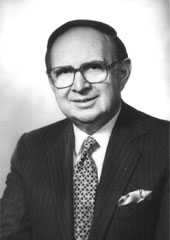
|
| Henry Kaufman |
The rest of the audience will probably be long dead after Henry Kaufman's image continues to shine, but nevertheless, there are some awkward features to this analysis and proposal. It fails to put enough emphasis on the blistering speed with which new schemes have been devised which really do benefit mankind even though the driving motive behind them may have been the purest sort of greed. The efficiency of the financial industry has been enhanced in a thousand ways, causing the cost of transactions to drop appreciably. The increased velocity, while it may have been motivated by a desire to cash in before others compete for it, is well known to increase the effective amount of money in circulation. The market finds itself with the tuna problem: to slow down is to die. One can even suspect that the excessive management compensation does not identify the buccaneer, it often represents the bribes engineered by young geniuses and intended to be offered to the older has-beens to get out of the road. Surely, the managers who have come up through the ranks are in a better position to ask questions and impose prudent restraints, than a new cadre of Washington bureaucrats who only hear of a gimmick after it has been run off the road.
It's easier to see what's the matter with this proposal than to identify what is better. The young cowboys at the computer screens of Wall Street are already better paid than the highest level of Washington, and their future aspirations are to become zillionaires in just a few more months. Someone fresh from these combat zones indeed knows what's going on, but he isn't going to give it up to become a regulator. So, Washington will instead recruit their brightest most idealistic classmates from the same Ivy League colleges, and train them in the most esoteric economic theory, They will be brilliant and attractive, idealistic and energetic, But they won't learn what's going on until that thing no longer matters and a new unsuspected one has taken its place. The only people who have a chance of controlling this zoo have been bribed to keep out of the way by astonishing compensation packages. If it's reform and regulation we need, here is the place to begin. Let's wait a bit to see what this thumping crash will do to get their attention.
Retire Later
Unions teach their supporters: never retreat. Yell, shout, threaten, roll on the floor in simulated agony, denounce and declaim -- but never give back a single concession you have previously won. The hallmark of ratcheted positions about givebacks, is they are not negotiable.
 Raising average retirement ages to 75 would quickly cure the financial problem. 
|
By having some personal contact with union officials, who are generally decent enough fellows when not in their negotiating stance, I have learned that, to them, advancing the retirement age is absolutely not negotiable. Some of this intransigence is fake, having to do with negotiating traditions, and some of it has to do with the equally traditional stance that work is some dreadful thing which has been inflicted on the working man by unfeeling employers, or management, or the rich aristocracy or somebody. Reflex belligerence is therefore triggered immediately by suggesting that people are going to have to work more than they expected to. Much as I hate to offend people in their deeply held religious beliefs, I bring the news that retiring later would immediately solve the problem of affording to retire and that no other proposal under the sun has greater chance of solving that problem. But it's like the Law of Gravity. When dealing with demographics, to declare that something is off the table, or unacceptable, or a giveback -- is just bombast. With the present data, we are going to have to re-set the retirement age to 70. If medical and demographic trends are unexpectedly extreme, we may have to go to 75. If you think someone has promised you can retire at 55, you had better be in an iron lung or drinking your meals through a straw.

|
| Retirement Later |
It's easy to see that later retirement cuts lifetime costs in two ways: it increases the duration of earning and saving. And it shortens the years of retirement payout. The later you retire, the better it is. So the less you save, and the more lavish your lifestyle, the older you will be when you can afford to retire.
A lot of things can be debated, and a lot of clever ideas can be worked with. But it is going to take an atomic attack or something similar to modify this particular prediction about the future. And even doomsday predictions just make the future look worse, not better. Because as the insurance salesman tells you, you can have it one way or the other. You can die too soon or you can live too long. Since you can't know in advance which it will be, you would be wise to work a little longer, just in case.
A New Food and Drug Category

|
| Nervous System |
An editorial in the April 7, 2006 Wall Street Journal rouses a proposal germinating in my mind for twenty years, a new compassionate status of pharmaceutical regulation for dangerous but effective new therapeutic agents, not presently provided for in law.
The editorial concerned a new drug treatment for multiple sclerosis, a crippling and usually ultimately fatal condition which destroys the nervous system. In a hearing of the tests of this new drug, we hear numbers like 85% total remission. Unfortunately, we also hear of four patients who died, quite possibly from the treatment. From that point on, you could write the reports from memory. Patients come forward, declaring their willingness to run any risk to get the drug; politicians are sympathetic. The Food and Drug Administration feels forced to withhold the drug from the market until the situation is clarified; other politicians are sympathetic. We are reminded of thalidomide, which was luckily withheld from the American market until the German experience showed that pregnant women who took thalidomide could have babies without arms or legs. This lucky illustration of the value of bureaucratic procrastination gave Senator Kefauver the strength to push through an amendment bearing his name, demanding proof of efficacy, something quite irrelevant to the safety of thalidomide. Seldom mentioned is the fact that thalidomide has since proved to be quite useful for the bone cancer called Multiple Myeloma; this value took a very long time to surface, under the circumstances. The efficacy rule accomplished the purpose, however, by delaying all drug approvals, unfortunately also shortening the time left for patent coverage, and vastly increasing the cost of drugs by shortening the time on a patent to recover development costs. After thirty years of hearing the same arias re-echoing about one drug introduction after another, it begins to look unlikely that Congress will ever be able to stand the political heat which would be generated by a serious attempt to fix this problem. But surely that can't be allowed to continue forever.
Taking the multiple sclerosis treatment as an example, the patients want the drug, and their doctors want to use the drug but they don't want to be sued or prosecuted. It's almost certain that most of these patients would sign anything, accept any risk, even agree to a shortened life expectancy in return for an 85% chance of stopping the disease in its tracks. All the doctors want is to be held harmless by the courts for exercising reasonable care under the circumstances. The same is probably true in a political sense, for the FDA and Congress, who surely would be satisfied to have the doctors take the blame for any problems encountered. The drug companies want to preserve their patent protection, surely that can be accommodated. Perhaps they should be asked to contribute to a fund for the victims of unforeseen accidents; they would probably agree. What would satisfy the trial bar is less certain; they should be asked to stipulate something. As a matter of fact, anyone at all who has qualms about such a system of special defined exemptions should be asked to come forward with serious suggestions. There would then ensue a lengthy and ultimately tedious debate about details.
This would all take some time; at the end of it, someone would have to make some arbitrary decisions. But at least we could expect more progress than we have seen in the last thirty years of indecision.
State Capitol Think Tanks
 States rights will be neglected as long as state governments remain so second-rate. 
|
Setting aside one's political party preferences, it is hard to deny the considerable increase of new and sophisticated ideas generated by the Republican party in the past twenty years. For fifty years before the Reagan Revolution, it was quite the reverse. All of the bright new ideas -- good and bad -- seemed to bubble out of the Democratic Party, while the Republicans just sulked and muttered. Even when Eisenhower swept the Democrats out of power, he was mostly riding a crest of idea fatigue. Leave us alone for a while. Thirty years before that, Harding came into office promising a "Return to Normalcy". The country does occasionally get fed up with pesky innovation, but for nearly a century we became accustomed to ideas ("reform") coming from the left, resistance coming from the right.
Yes, the pendulum does swing back and forth spontaneously. And yes, Adolf Hitler inadvertently stirred the American intellectual pot by chasing the Austrian school of economics to our shores, primarily landing at the University of Chicago. Nevertheless, a case can be made that it was the establishment of a number of think-tanks in Washington which brought conservatism to life as a positive force. The model was already in place, at the Brookings Institution and the Institute for Advanced Study in Princeton. In each case, a very wealthy man decided to endow an institution for the promotion of ideas congenial to himself or his religion. In the case of Bamberger the department store mogul, the think tank was mainly created to house one man, Albert Einstein. While Bamberger and Brookings were liberals, their model was copied by Otis at the American Enterprise Institute, Coors at the Heritage Foundation, Koch at the Cato Institute.
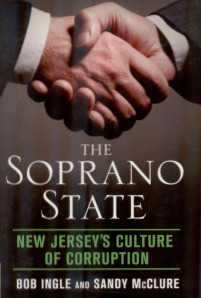
|
| class= |
It does not seem to have occurred to the existing think tanks that one of their favorite ideas might be accomplished internally, within the think tank world itself. That idea is devolvement of power from centralized Washington to the fifty various state governments. Anyone can see, on any weekend, that urban Washington DC has outgrown its blood supply. The traffic jam out on Fridays is matched by equal paralysis on Monday morning as the crowd returns to work. In spite of a splendid highway system, designed at least in part with emergency evacuation in mind, the place is both unlivable and dysfunctional as a place to work. Twice each week, the Southern half of the East Coast is cut off from the Northern half by this gigantic traffic jam, just as effectively as if Generals Lee and Grant were conducting battles there. Components of one administrative department are cut off, not only from other departments but from other components of the same department. The headquarters of the Department of Health and Human Services is eight miles away from the National Institutes of Health in Bethesda, and thirty miles from Medicare headquarters in Baltimore. The headquarters of the whole country is cut off from the rest during the working week and essentially deserted on weekends. The need to decentralize the federal government in some way is a case that can be made on physical issues alone, quite ignoring the philosophical issues of states rights, local autonomy, or shortening the chains of command.
And yet, it must be admitted. State governments are just terrible. They are almost all located in small one-industry towns, at a considerable distance from population centers, universities, business, and commerce. Almost no state capitol has a good airport or good air service. The hotels are mostly despicable. As for entertainment, there is essentially nothing for a visitor to do, there. It doesn't matter how this came to be the case, but Illinois provided us with an insight into the process when Abraham Lincoln helped some railroad and real estate interests by dropping the state capitol in Springfield, naturally enriching a large number of local landholders, thereby. The state capitals used to be in Philadelphia, New York, and Boston; now they are in Harrisburg, Albany, and Springfield. The elected representatives clearly prefer to do their work out of sight, and because it is out of sight it can be incompetent, corrupt and unaccountable to anyone. It is a hopeless task to move the capitals back into the sunlight because the legislators prefer it to remain this way. But because state government are such a hopeless mess, it is unthinkable to devolve federal functions to them.
It's probably useful to remember that our Constitutional Convention was motivated to transfer as much power as possible from state legislatures to the central government. That turned out to be just a few powers, so the framers assumed that the vast majority of government would take place in state capitals. That's how things were under the Articles of Confederation, but unfortunately included watering the currency and passing debt-forgiveness laws. Control of the currency and regulation of private contracts, at least, should remain out of the hands of the state legislatures. When state governments were instruments for both starting the Civil War and resisting Reconstruction, furthermore, the victors became even further determined to weaken state government effectiveness. But moving the Department of Agriculture to Nebraska and the Department of the Interior to Colorado or the National Archives to Philadelphia and the Department of Defense to Austin are examples of devolving functions to different areas of the country rather than to different electoral bodies, and they all sound like things which might be feasible to move, just to relieve the traffic in Maryland and Virginia.
But here's a different place to start: if state governments flee from the sunlight, let's chase them with sunlight. Who knows a likely billionaire, able and willing to start a think tank in the sticks? If it works, perhaps others will imitate it. Every state capital city ought to have at least four think tanks. Unfortunately, there are at least forty which have none at all.
Longevity Revolution
.
Selection of Constitutional Rights for the Bill of Rights
When the First Congress convened in 1789, it confronted more than a hundred proposed amendments to the Constitution, largely stirred up by supporters of Thomas Jefferson who feared any strong government would be too similar to the monarchy we had just discarded. Essentially, Congress dumped these noisy dissatisfactions into the lap of James Madison who had largely constructed the Constitution, constituting a committee with Madison as its chairman. The first ten amendments emerged together as a package, enabling trade-offs and compromises; all subsequent amendments have been taken up individually, one by one. Since members of the First Congress and the Constitutional Convention were largely the same people, much of the durability of the Constitution can be traced to them. And therefore, the tendency of the nation to feel its way into a new idea, sometimes retreating, sometimes plunging ahead, has migrated into the Supreme Court. This result was probably accidental, but nevertheless, the power of the Supreme Court was greatly strengthened by default; it alone can tip-toe out of a Constitutional tangle created by momentary impulses.
After winnowing out duplicates and half-baked ideas, Madison's committee condensed the wildly disparate proposals into ten amendments, supposedly limited to ten by alluding to Ten Commandments which were sufficient for Moses. Three main principles emerged. The Constitution should be parsimonious in granting divine, or natural, rights because what Nature's God had granted was hard to tell but what the judiciary could enforce had limits. But thirdly, granting even these few self-evident rights to slaves might tear the Union apart.
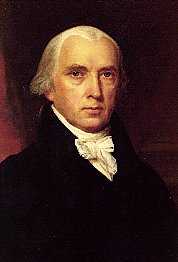
|
| James Madison |
So Madison's committee narrowed the legally enforceable human rights to a handful, selecting only those so self-evident they could withstand the tensions of enforcing them. When contemplating the problem of extending mandated rights to slaves, however, there was no obvious solution at all. That made it easier to limit the Federal Government to enforce a handful of enumerated powers, leaving all unspecified matters to the state legislatures to enforce if they could. The boundary might shift with time, but without saying so, the Bill of Rights kept the Union out of the one main foreseeable problem, of slavery. The unmentioned conflict between universal rights and slavery defaulted to the individual states, or to whomever, but definitely not to the Federal Government.
That tap-dance held together for nearly a century, and then it didn't and we had a Civil War. During all that time, the balance of power was steadily shifting from the confederated states to the centralized federal government, and after the Civil War, it shifted still more. However, the southern confederation may have been defeated, but it was not exactly reconciled, nor were the former slaves exactly equalized. Their current drift toward entitled dependency was particularly unexpected.
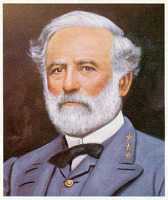
|
| Robert E. Lee |
Many post-war expedients were tested to heal these wounds, some of them useful and some, like forcible Reconstruction, disruptive. Two expedients opened new wounds and distracted the country for a century. The first was the intentional weakening of the quality and effectiveness of state governments, to the point where it can now be asserted that state government is the weakest part of our whole government structure. Those who prized universality and efficiency, or who sought greater international power, regarded state legislatures as a hindrance; just look who got us into a Civil War. Consequently, corruption and ineffectiveness were privately tolerated in state legislatures, because discrediting state governments made them easier to ignore. Repairing the resulting imbalance in our overall system is now growing to be one of our greatest problems. Almost no one remembers this was the price of a ratified Constitution, so increasingly that excuse is futile. In fact, in the thirty-seven more recent states to be admitted to the Union, it is not even accurate.
The second response to a sluggish equalization of racial rights was invented by Madison himself. He felt that the ability to migrate from one state to another would discipline any temptation of a state to misbehave. If your state taxes you unfairly, move. If your state government gets too corrupt, first try to throw the rascals out, but in the last extremity, go somewhere else. This concept has worked magnificently in maintaining national interest rates with appropriate local modifications, and we are about to learn whether it will adequately restrain the half dozen states who have pushed the limits of taxes and borrowing. In the case of former slaves, massive out-migration took a century to happen and then it happened all at once, just after World War II. Wave after wave of slave descendants from the rural South got on buses and came to the heart of Northern cities. Overwhelming the ability of weakened local governments to cope, city institutions disintegrated, particularly the public school and justice systems. The consequence is continuing disarray in Washington DC, Baltimore, Detroit -- and Philadelphia -- together with a host of smaller cities like Reading, Newark, Paterson, Wilkes-Barre, and many others, in all of which the unsustainable wave of immigrants added to local industrial and civic problems which had other causes. So now we have two new problems, weakened state government and disruptive migrations, which in other circumstances tended to mitigate each other, but now increasingly make each other worse. Someone must take hold of the issue that applying Madison's concept of competitive states has created a strong state disincentive to deal with poverty.
It took a century for Madison's scheme to break down into war, and Lyndon Johnson was surely quite right to feel a century was long enough to tolerate the disunity of the Civil War. If he could not make people love one another, at least he could enforce the law. State governments were not doing it, so he whipped the Congress into taking it on as a Federal duty, by passing the Civil Rights Act. Half a century has passed with some progress, but surely not an end to the disunity. State governments have been further weakened, but mass migrations have calmed down. In another half century, the slavery issue and its consequences may fully subside. Meanwhile, the reaction of extending federal power continues, now threatening to extend to the medical profession, the finance industry, the automobile industry, and the Internet. Our Constitution continues to survive more or less intact into its third century, and we grow increasingly wary of tinkering with it as we watch most other nations fail to achieve its essential quality. Which is, it survives. Aside from the Bill of Rights and some technical tweaks, there have only been five amendments of any substance. Meanwhile, new federal statutes and regulations grow by a hundred ponderous volumes a year.
New Roles For Grandparents
Like everyone else, I had two grandfathers and two grandmothers. However, I can only remember seeing one grandmother on a single occasion when I was three or four years old, and the other three died before I gathered any recollection of them. Essentially, I never knew my grandparents. If they ever knew me, it was as a puking infant, don't he look sweet.

|
| Great Grandpa and Great Grandson |
One of the many unexpected consequences of the introduction of penicillin, polio vaccine and the like, is that my generation has had to invent the role of grandparent, without any models to follow. My grandchildren are all in college or beyond, with reasonable expectations of getting married and starting careers while I watch. I already have two great-grandchildren, and with luck will have lots more. To my knowledge until ten years ago, I never met anyone who had great-grandchildren, so I'm not entirely certain what I'm expected to do with them. I could ask others, but they don't know much, either. Society has evolved a database of experience about how parents are supposed to relate to children, and children have evolved literature about how they are expected to cope with their reflex hostility to their parents. Sigmund Freud made up huge mythology about such conflicts and emotions, and while we are shaking off a good deal of it, Freud did help define the general rules of behavior between parents and children. All of us believe we are exceptions to such rules, of course, but they do make up a road map of the land mines to avoid. Furthermore, most of us formed some firm opinions during the Vietnam conflict or the Summer of Love; presumably, most of our children feel a little silly about it now. Their folk songs record the mythology of that experience; even with guitar accompaniment, these songs all sound a little wry. Sorry about that. Wouldn't have missed it for the world, but sorry about that. Are ya gonna need me, are ya gonna feed me, when I'm sixty-four. Sixty-four? That was twenty years ago.
By this time, the sassy generation has had a chance to learn how sharper than a serpent's tooth it is, as a reminder that there have always been a few who lived King Lear's experiences, but now it could happen to anyone. The two generations, my children's and my own, have now lived a common experience from start to end, not just half of it as Freud depicted. But there's a new twist; the two generations think they have a role with the third generation. Both generations are unclear about what the grandparents' role should be with the new generation of young adults. I know what I think, you know what you think. Neither of us knows anything.
A thousand years of experience teaches how unwise it is to allow any relationship to revolve around gifts and the expectation of gifts. A mere two hundred years of experience make it plain to almost everyone how easy it is to ruin children by making life too easy for them. What does one do, then, with savings large or small, when grandchildren seem to combine aloofness with expectations? Does our society really expect us to favor our personal genome into eons of astronomical time? As one wanders occasionally through graveyards, it is very clear that our nostalgia for great grandparents born in 1814, is small indeed. Should we make an effort to create a lasting impression on such visitors from another planet, or should the whole misty idea of consanguinity be abandoned as a delusion? Should we take the wry advice of those who test our reactions with cynical descriptions? Should we, in a word, attempt to live out our lives with the perfect timing of spending our last dollar during our last hour? Come back in fifty years and there will be shelves of novels, plays, and poetry which tell the sad tales of those who made one choice or the other. Future generations of grandparents will still have to make their own decisions, but at least they will know how the world will view them. One generation will likely cling to the viewpoint of its contemporaries, another generation will reject such viewpoints as nonsense. Our generation will never be quite sure.
Among the funny things about this situation is the curious inversion of the social classes. Everyone notices how domestic servants hang around observing the behavior Upstairs; no matter how firmly it is rejected Below Stairs, employer behavior is marveled at and imitated to some degree. But in the past, those servant social groups who had their children at sixteen, their grandchildren at thirty-two, their great-grandchildren at forty-eight, knew something that those of us who defer our gratifications might wish we knew. The experience is raw and basic, and all the more important for that reason. Some budding novelist, hoping to cloak predictions as folklore, might give that theme a try.
Gum

|
| Gum Bubble |
The ancient Greeks and Romans are said to have enjoyed a sort of chewing gum. The ingredients are uncertain but unlikely to have been chicle, the sap of a variant rubber tree, which was taken up by the Mayans in the First century. The vision thus ensures that Mexican soldiers might well have been chomping when they set out to conquer Texas and devastate the Alamo. Conceivably Santa Ana himself was popping bubbles when Sam Houston found him crawling through the tall grass when he should have been dying like a man.
What is not so fanciful is that Santa Ana did go into exile in the United States, seeking refuge on Staten Island. Taking along a large supply of chicle, he was hoping to find a way to change it into rubber and thus restore his fortunes. His New York landlord, a photographer named Adams, struggled unsuccessfully for months to change the gum into rubber, but eventually switched over to chewing gum of chicle. This Mexican rubber variant is chewy only within a narrow temperature range, getting brittle when cold, and sticky when hot. The outcome of this bizarre episode was the Adams brand of chewing gum, a dominant feature of our culture until 1922 when William Wrigley, Jr. of Chicago added a mint flavor and made a great fortune selling the hope that minty taste would clean your teeth, sweeten your breath, and improve attractiveness to the opposite sex. Wrigley must have been a great businessman, since the Wrigley Building still dominates central Chicago, while everyone knows about Wrigley baseball field, and his descendants even run a private railroad through the Copper Canyon south of Tucson into Mexico. Wrigley's winter mansion sits on top of a small mountain outside of Phoenix, once affording a grand view of the surrounding desert for many miles. But subprime mortgages helped build up the desert, so at night there is now a sparkling view of the lights of Phoenix suburbs, longingly gazing up at Wrigley's mountain fastness filled with pictures of relatives who got themselves great notoriety, mostly related to unfortunate escapades with love.
Well, whatever. By 1960 a cheaper synthetic chemical came to replace chicle in Chiclets without distressing the customers and seemingly making it commercially practical to spread this central feature of American culture to Asia, Europe and beyond, with the notable exception of France which makes their cultural superiority a point of national pride. On further reflection, if they prefer vintage chicle to the present chemically improved synthetic, the French may have an important insight. Just look at our filthy sidewalks.
Other cities may be more diligent in scrubbing their sidewalks, but at least in Philadelphia, the new synthetic chewing gum is leaving its mark. The realization gradually creeps up on you that sidewalks near popular corners of the center city are spotted with round black spots, slightly larger than a silver dollar, but uniformly black. Just what the sidewalks around high schools look like, I tremble to consider. But those city corners where a sidewalk vendor parks his cart are particularly peppered, representing the disgusting habit of spitting the chew-gum on the sidewalk before eating the hot dog. The detritus is flattened out by someone's shoe, and the result is quite distinctive. As I was contemplating a particularly loathsome street corner, a passing Philadelphia Grand Dame shared her insight with me that the gum attracts dirt and gets black. I somehow doubt that because it is such a uniform blackness. It seems more likely that the trade secret chemical deteriorates in the sunlight, and being less sticky than the traditional goo, sticks to the sidewalk instead of the shoe which squashes it.
So think this over. Someone was recently chewing that stuff; would you kiss that person? If it's fresh enough, it might transmit the flu virus to your shoe; ye Gods, maybe the HIV virus, perish the thought. There's a great absence of evidence about the disease transmissibility of this unknown material. Maybe our congressmen should take a recess from blaming Wall Street for the decline of Greece and Portugal. And make chew-gum scoopers just as mandatory as pooper scoopers.
Footnote: A fellow member of the Right Angle Club recently revealed he had once worked for the Philadelphia Chewing Gum Company in Havertown, which was closed by new owners in 2003. While he didn't know anything about the ingredients of gum, he could report that this company used trainloads of old rubber tires for some purpose. On further checking, it is stated in the literature that at the present time, no chewing gum doesn't use rubber, so apparently Santa Ana's dream has finally come true in a round-about way.
Addressing the Flaws of Republics
EVERYONE might profit from reading Plato on the subject of republics, not to mention reading James Madison. Both The Republic and The Federalist were conjuring republics they proposed, not ones they had experienced. After Madison did get the hands-on experience he had such radical changes of opinion his friend George Washington essentially never spoke to him again. Not only in republics, of course, does reality prove different from founding theory. It might seem more measured to say of republics that two centuries of their reality proves to be such an extension of theory, it effectively departs from it. In essence, the Republican idea is to limit the voters to one periodic review of their representative's term of office overall, not in ongoing picky detail which would hamper him. This definition contrasts republics with democracies and implies the reason to favor republics. The elected representative is given full power to act during his term in office, but must eventually face the voters for accounting at the fixed time for re-election. Plato and Madison were right about extending latitude to one's chosen representative, but they failed to predict how effectively that latitude might be stolen by the legislative body itself and controlled by rules and leadership which skirt ratification by the general public outside their chamber, in any district. The Romans, of course, did know what they were talking about, but history has tended to ascribe Roman difficulties -- assassinations, for example -- to flaws in Roman character rather than in the construction of the Roman Republic. After describing some problems history has revealed about our own system, this essay is written to propose a solution. A second essay follows, to defend that solution.
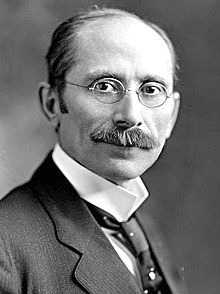
|
| Joseph L Bristow |
The differences between House and Senate in the original U.S. Constitution were three, but since the Seventeenth Amendment in 1913, there are now only two. Originally, Senators were selected by the states they came from, mostly by the legislatures. A century of experience demonstrated the result was cronyism, members of the legislature using senatorial appointments as bargaining chips and for the most part limiting the choice to one of their own members. The provision probably did attract a higher grade of legislator overall, encouraging those primarily ambitious to be U.S. senators to have a try-out in the minor leagues first. It did give the State government serious power to punish a U.S. senator who failed to please the home state. And this selection process made it simpler and cheaper to run for the job as U.S. senator. This feature encouraged candidates with competing for career choices, otherwise discouraged by the expense and unpleasantness of candidacy, to step forward. But by 1913 all this was seen as a way for cronyism to dominate the process, swapping appointments for favors, or even more tangible bribes. From the distance of another century, it can be seen that the steadily declining power of state legislatures was matched by a declining quality of their elected membership, leading to a rising level of sordidness in their foibles. Hapless amateurs were largely supplanted by career politicians. After the Civil War "states rights" stirred up memories of secession and led to a deliberate weakening of the states' role. Whatever the reasoning, the mentality of Progressivism was sweeping the country in 1913, and popular election of senators was deemed a Good Thing, swept into general satisfaction. Doubt about whether it all made as much difference as claimed lies in the reality that from 1913 to 2010, one quarter (182) of all Senators have first arrived in the Senate through appointment by a Governor to fill an unexpired vacancy. Many of these vacancies have of course been contrived for the purpose.
The relative power of a senator and a representative lies in the size of the population who vote for them, and the frequency with which they must endure that unpleasantness. Members of the House are elected for two years and members of the Senate are elected for six; the voting constituency of 100 Senators is generally much larger than that of 532 Representatives, so because the population grows faster than the number of states, the representation discrepancy also grows. The frequency of running for reelection seems to be so irksome that whenever a Senate seat falls vacant, some sitting Congressman from that state is almost certain to try to switch. Of course, it is true that with only a quarter as many senators as congressmen, the power of each vote is weightier. To the extent that committee memberships represent special insider power, a senator does belong to more committees but is more severely stretched to attend them all. Each senator's vote does have a greater scarcity value, but a Representative who tends to business is more likely to know what he is talking about, hence better able to be influential in the committees where most matters are really decided. The limits of merit promotion in both houses of Congress lie in the differing power of various committees, while the favor of appointment remains within the iron control of caucus leadership. In public, senators seem generally more polished and experienced in public persuasion. The persuasion that counts, however, is of gaining the respect of colleagues in your own legislative body, always restrained by the power of leadership to coerce conformity. Public persuasiveness, by contrast, is often little more than glibness, reflecting greater experience with dodging an issue to conceal a lack of depth in it. Almost all senators aspire to the presidency, although few achieve it. No Congressman has been elected President since Warren Harding; indeed, few Congressmen even dare to seek the nomination. The appointment of Gerald Ford was a special situation. However, it is worth pondering that during the early days of the republic, the House of Representatives was considered much more prestigious than the Senate, and that curiosity continues to raise an important question just why it is now reversed.

|
| George Washington |
The differences in prestige between the House and the Senate cannot be ascribed to the comparatively minor differences in their Constitutional definition, the size of their district and the frequency of election. Otherwise, we could immediately improve the quality of congressmen by reducing the limit of their number and frequency of re-election, which scarcely anyone has proposed. The more likely source of the problem can be found in the differing rules of procedure which each body has adopted; and reaffirms at the opening of each term. Various strategies of committee assignment and seniority have adapted to the reality that newly elected politicians rarely have any skills other than the ability to get elected. But almost everyone can learn, given enough time being exposed to a topic. A seniority system can occasionally lead to someone who is hopeless, gradually floating into a position where he can do great harm. Provision must be made for graceful exceptions to the seniority rule, usually by excluding a member from important committees until he has demonstrated some competence, less often by later dropping someone who has age- or alcohol-diminished faculties. Underlying this approach is a contempt bred of experience for the wisdom of the voters, back there in the district, whereas the leaders of the fraternity can protect the nation by judiciously devised rules. Sometimes it is, unfortunately, necessary to be a little hard boiled.
So far so good. When Jefferson and Martin Van Buren invented political parties, the bodies of Congress responded by inventing caucuses. George Washington was not a learned man, but he knew he hated this system. James Madison probably feared political parties more than he hated them, so he incurred Washington's permanent displeasure by getting good at manipulating what he saw as the winning strategy. Van Buren's fate was more ironic; after inventing many of the unpleasant little strategies of modern politics, he was defeated by William Henry Harrison in the "log cabin" election of 1840. Harrison hadn't been born in a log cabin at all, he was born in a Virginia mansion, hee, hee, hee. George Washington wouldn't have chuckled at that one, he would have been livid.
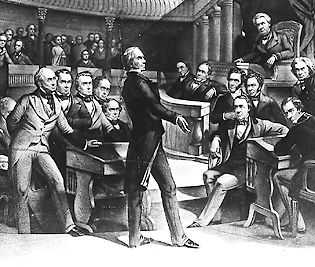
|
| Henry Clay |
Party caucuses have only one central feature, which is vote-swapping. Many of the strategies of this unattractive behavior were outlined in elegant detail by Pliny the Younger, in the Roman Senate, and James Madison the student of government had sought to avoid them. When he decided it was hopeless, he joined them and got good at it. In retrospect, the premier example of vote-swapping was the trade which Madison and Hamilton made, placing the nation's capital in Virginia/Maryland instead of Philadelphia, in return for federally redeeming the Revolutionary debts for all 13 states, when Virginians had already paid theirs off. Philadelphia had essentially nothing to say about it. Pliny had cautioned and subsequent practitioners have followed the advice to cover your tracks by swapping votes for an issue seemingly unrelated to the one in dispute. That's about all there is to vote-swapping, find out what the guy wants badly enough, and trade him something for it. It follows that it's wise to give off the appearance that you don't want much of anything. A corollary is that political caucuses try to conduct even innocent or public-spirited discussions in secret, making public only what is expedient to be made public. And a further corollary: some members of a caucus are from totally "safe" districts. Occasionally their votes can safely be traded for something the opposing party wants but the caucus feels necessary to claim to oppose. When a caucus wants something badly enough to trade it for something else but is three or four votes short, the opposing caucus may trade the four votes from safe districts while violently denouncing the dirty turncoats. All this is known as party loyalty. When things are particularly tough, party loyalty can be enforced by finding out what you want badly and taking it away from you. When these whips are applied to you, a grievance develops. Fine, what do you want to trade in return for vengeance? Many of these refinements seem to come, not from Rome, but from Sicily.
As was stated at the beginning, the purpose of this essay is not to rail at Congressional corruption, but to counteract it to some degree. Since the worst features of this system require secrecy and public duplicity to be effective, the best remedy is sunshine. Not about what Roosevelt did in his third term, but about what your local congressman might do next week, and his fear you will find out. His fear that a blogger will tip off the local newspaper or radio station, encouraging someone else with the ambition to file for election against you. And his fear that when he asks someone for a campaign contribution, that person will bring up the topic in question. His fear that the local political boss will decide he can't win.
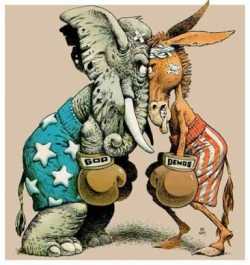
|
| Boxing Politicians |
This was more or less the system which the founding fathers, James Madison chief among them, envisioned for this shining city on a hill. And which two centuries of rather clever schemers have gradually eroded. The highly desirable feature of a republic is that the elected person is free to represent his own interpretation of what is best for his district or, failing that, what is best for the nation. The elected representative is encouraged to risk defeat in the next election, if in his judgment what is good for the district is bad for the nation. But he is not a suicide bomber if his vote will make little difference in the outcome he can be forgiven for taking cover. One would wish that fewer of them would speak one way and vote in the opposite direction, but that can be forgiven if someone back home in the district is keeping score and letting others know of it. The fundamental principle of a republic as distinguished from a pure democracy is that a representative, while free to act during his term in office, remains obliged to face the voters at the appointed time. Our system has come to exaggerate the actual extent of freedom to use judgment because the freedom has been stolen by party leaders through the application of schemes too devious to detail. But freedom is fundamentally a good thing. What has come to be so lacking is the idea of facing an informed electorate in making a choice between you and an informed opponent. The public, it must be feared, doesn't know beans.
And so the proposal for fixing this mess is difficult, but it can be stated simply. The recent economic boom created nearly a thousand billionaires; maybe four hundred would be a number that would escape challenge. If only fifty of them would endow think tanks in all fifty state capitals, and the fifty-first would endow an organization dedicated to making their research available to the public, then perhaps another fifty would be prompted to create a second think tank in each state capital on the opposite political side. Two polarized think tanks in each state capital, just imagine it. As things now stand, it would be a sufficient first step if that happened in only one state, and the rest of the country could watch what happens.
Rationing, No Matter What You Call It.
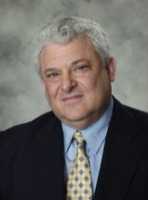
|
| Arthur L. Caplan |
The Right Angle Club of Philadelphia was recently addressed by Arthur L. Caplan, Director of the Center for Bioethics of the University of Pennsylvania. His topic was Healthcare Rationing. It was interesting to hear the viewpoint of someone who views the 2010 mandatory health insurance system primarily through the lens of its ethics; just like the Tea Party objectors on the other extreme of politics, he sees the new law as merely a rationing system. However, his initial salvo is similar to that of the bill's proponents before it was enacted: "Every system always rations in some way or another." If you expected the outcome to be rationing from the beginning, your focus is naturally fixed on just what sort of rationing you get, perhaps measured by whatever kind of rationing you had formerly hoped for.
Ethics is, after all, a system of constraining native, unconstrained, outcomes into something deemed more suitable. That's a definition which could be equally well applied to the reform of all sorts and repeatedly tends to cast reformers as underdogs fighting the establishment. Since the American healthcare system in 1950 could fairly be described as rationing healthcare with money, and its history from then to now has been one of jumbled similarity to 1950, most discussion accepts a financial rationing description for what Obamacare changed. There is much uneasiness about totally supplanting the marketplace with insurance since universal insurance leaves no room for setting prices -- except by government proclamation, filtered through some sort of insurance bureaucracy. There was a time when many people thought that was better than paying for it yourself, but now that it's here, there are growing doubts.

|
| UPENN |
There's surely going to be a last-ditch effort to overturn Obamacare, whether through Congress or the Courts and failing that, through stalling it until the President can be replaced in 2016. Let's assume for the moment that such efforts fail, and are not followed by armed rebellion. If the central issue is how do we find more acceptable methods of rationing, two proposed methods have begun to seem attractive. The first is proposed by Congressman Ryan of Wisconsin, to the general effect of taking what we now spend, chopping it up, and issuing vouchers for the same amount less net middle-man costs. This approach stops the rise of costs right where they are, and thus pleases Congress. But the thing to be rationed is redefined as well. It rations future cost rises, net of any savings wrung out of the system by competition for voucher money. It's fair to claim this system should not deny the present level of care to almost anyone. It has a price, however. If you want future miracles, you have to pay for them.
A second proposal depends on the observation that most healthcare costs are concentrated in the first year of life, and the last year of life. Strip those costs out, and what is left would almost surely be manageable, particularly in view of how the concentration of costs in those two areas steadily increases. Essentially, this system promises to take generous care of the helpless when they are born and when they die. Healthcare costs during the years of school and employment, however, could more confidently be left to people who are sentient and reasonably healthy, so that's where the inevitable rationing would be concentrated. Once more, the payment system has been modified to avoid such third-rail issues as euthanasia for Grandma or for self-inflicted diseases, or even for abortion. Those would be left to the public to manage during stages of life where there is a reasonable likelihood that the patient's own wishes can be paramount. For now, we pass over the technicalities of last-year-of-life insurance, but it could fairly begin with reliance on reimbursing Medicare after the fact, while traditional first-dollar insurance for pregnancy and newborns, or even mandatory government reimbursement, might seem acceptable even to strong conservatives.
So, what's proposed here is a substitute for both the traditional system and the bewildering command and control system of Obamacare. It shifts the subject matter for rationing away from those areas that frighten the public the most, toward either: rationing future unknown scientific advances, or, rationing healthcare during the years when it is comparatively predictable and involves patient cooperation during the years of reason. That's the summary; other proposals are welcome.
Regrettably, after each November election, we first must potentially endure a lame-duck Congress, followed by two years of White House-Congress gridlock. There will, unfortunately, be scant tolerance for ethicists, during those grievous national experiences.
Nanoparticles: The Dwarfs are Coming

|
| Professor Shyamelendu Bose |
Professor Shyamelendu Bose of Drexel University recently addressed the Right Angle Club of Philadelphia about the astounding changes which take place when particles are made small enough, a new scientific field called nanotechnology. In one sense, the word "nano" comes from the Latin and Greek for "dwarf". In a modern scientific sense, the nano prefix indicates a billionth of something, as in a nanometer, which is a billionth of a meter. Or nanotubes, or nano calcium, or nano-anything you please. A nanometer is likely to be the dominant reference because it is around this width that particles begin to act strangely.

|
| Nanoparticles |
At this width, normally opaque copper particles become transparent, the cloth becomes stain-resistant, and bacteria begin to emit clothing odor. Because the retina is peculiarly sensitive to this wavelength, colors assume an unusual brilliance, as in the colors of a peacock's tail. The stable aluminum powder becomes combustible. Normally insoluble substances such as gold become soluble at this size, malleable metals become tough and dent-proof, and straight particles assume a curved shape. Damascus steel is unusually strong because of the induction of nanotubes of nanometer width, and the brilliance of ancient stain-glass colors is apparently created by repeated grinding of the colored particles.

|
| Richard Feynman of Cal Tech |
Practical exploitation of these properties has almost instantly transformed older technologies and suggests the underlying explanation for others. International trade in materials made with nanotechnology has grown from a few billion dollars a year to $2.6 trillion in a decade, particularly through remaking common articles of clothing which were easily bent or soiled, into those which are stain and water resistant. Scientists with an interest in computer chips almost immediately seized upon the idea, since many more transistors can be packed together in more powerful arrangements. Richard Feynman of Cal Tech seems to be acknowledged as the main leader of this whole astounding field, which promises to devise new methods of drug delivery to disease sites through rolling metal nanosheets into nanotubes, then filling the tubes with a drug for delivery to formerly unreachable sites. Or making nanowires into various shapes for the creation of nano prostheses.

|
| Cal Tech on Los Angeles |
And on, and on. At the moment, the limitations of this field are the limitations only of imagination about what to do with it. For some reason, carbon is unusually subject to modification by nanotechnology. It brings to mind that the whole field of "organic" chemistry is based on the uniquenesses of the carbon atom, suggesting the two properties are the same or closely related. For a city with such a concentration of the chemical industry as Philadelphia has, it is especially exciting to contemplate the possibilities. And heartening to see Drexel take the lead in it. There has long been a concern that Drexel's emphasis on helping poor boys rise in the social scale has diverted its attention from helping the surrounding neighborhoods exploit the practical advances of science. The impact of Cal Tech on Los Angeles, or M.I.T on Boston, Carnegie Mellon on Pittsburgh, and the science triangle of Durham on North Carolina seems absent or attenuated in Philadelphia. We once let the whole computer industry get away from us by our lawyers diverting us into the patent-infringement industry, and that sad story has a hundred other parallels in Philadelphia industrial history. Let's see Drexel go for the gold cup in this one -- forget about basketball, please.
Bonds--Do They Have A Future?

|
| Relic of the Past? |
EVER since we finally went off the gold standard completely during the Nixon Administration, the Federal Reserve has adjusted our money supply to create a fairly steady 2% inflation. If inflation is ever less than 2%, the Fed puts more money into circulation. Since many bonds are paying less than a 2% dividend, everybody who buys and holds them at par will lose money in "real" terms. That is, everyone who buys bonds when they are issued and sells them when they mature will lose spending power. Since they fluctuate in the meantime, it is possible for a trader to buy them when they are undervalued by the market. That trader will possibly make money, but only because someone else lost money. Something like that occurred during the recent financial crash bailout, when interest rates declined from 3% to less than 2% but were repurchased by the Fed as "Quantitative Easing", effectively giving speculators a 33% profit at government expense. But that doesn't happen often, and just guess who ultimately lost the money the speculators made. There is also that daunting question: when the time comes for the Federal Reserve to disgorge them, just who is going to buy all these cheapened bonds? In Japan, bonds paid a dividend of less than the rate of inflation for more than a decade; it's hard to think of a reason why the same thing could not happen in America. So it's also hard to imagine a reason why buy-and-hold investors should not abandon bonds, perhaps suddenly all at once, at some unknown time in the future. At that point, many of them will resolve never to try that, again. The whole idea is troubling.
It's particularly troubling in view of the lack of success, so far, of TIPS. These vehicles are new; perhaps the algorithm is set to ignore minor inflation and will over-respond to more major inflation, ultimately rewarding those who buy them. But at least so far, they are a disappointment. Furthermore, TIPS are quite cleverly designed to be inflation-protected, while unfortunately inflation usually does not follow a straight line but is volatile, or saw-toothed; the jury is still out. The jury better hurry up, because all investors look for net income after expenses, which include brokerage costs, taxes, and inflation. A long-term bond might have to pay a dividend approaching 4%, just to emerge with the same net value it started with; after five years of 4%, you could be 20% behind. And yet, the bond market with or without inflation protection is far larger than the stock market and compares in size with all other kinds of market. Who buys them, especially in these huge quantities?
Somebody must maintain statistics which answer this question, but as a guess, the main buyers are insurance companies, endowments, annuities, hedge funds, banks. And foreigners, of course, to whom our follies seem trivial compared with their own. The great argument for bonds is the safety of principal, and although safety is in question anywhere there is inflation when the topic is cash flow, safety is definitely an issue. Cash shortages are what cause bankruptcies, which are mainly useful in providing time to liquidate underlying wealth to pay restless creditors. The management of a non-profit organization must meet its payroll out of cash flow, so non-profits protect themselves from dissolution by having a regular flow of nominally secure bond dividends. Income from donations and contributions can be particularly weak during times of economic stress. Since most for-profit organizations also experience variable periods of time without profits, their situation does not differ greatly from nonprofits. That's particularly true when a for-profit organization has a vocal, activist stockholder group, who will protest fiercely if the management retains abundant cash. For such a predicament, holding bonds creates safety by some definition. The price of that safety is the long-term average loss on the bond portfolio; the company's alternative losses are whatever it takes to maintain a stable work force during unstable times. The business school assessment of this tradeoff is that bond losses can usually be passed through to the customers as a business cost, while layoffs and strikes may not be.
To restate the characteristics of willing bond purchasers, they are governments and corporations who have no common stock issuance alternatives, but regularly face a need to have money available for payroll. They also include borrowers and lenders at nominal interest rates like banks and insurance companies, who can afford to ignore inflation because their own liabilities are in nominal dollars, or come due at a date certain. And then, there are a host of beneficiaries of special-interest bond provisions, like "Flower bonds", state and municipal governments, foreign aid, student aid, etc. As an overall statement, natural bond buyers are those who either do not possess steady equity (common stock) alternative to offer investors or else are shielded in some way from the inflation and tax costs of buying bonds. Speculators and traders are excluded from the discussion because fixed-income trading is a zero-sum game, something you should teach your children to avoid. Other than these special niche opportunities, bonds should be regarded by the ordinary investor as trading opportunities when interest rates get too high, which is roughly every fifteen years or so.
Things in the bond market were not always so bad; Robert Morris, Jr. was a genius for devising this market in 1784. But the equity market was then not so well developed, life expectancies were shorter, and a minimum 2% inflation was not guaranteed by the Federal Reserve. The income tax had not been invented. It was possible to enjoy the promised benefits of lending in those days, for decades or even lifetimes. It was much harder to find investments of superior performance, without getting involved in business management. Meanwhile, the bond market just got huger and huger. Modifying or dismantling it in logical ways would have enormous disruptive effects. So enormous, the Congress has just adopted the stance called "kicking the can down the road", which is a debt you never seriously intend to repay.
Are we waiting for the bond market, the bond vigilantes, or speculators to find some vital vulnerable flaw, and topple it all into the ashcan of history? Or is there some better plan that no one has mentioned?
Political Parties, Absent and Unmentionable
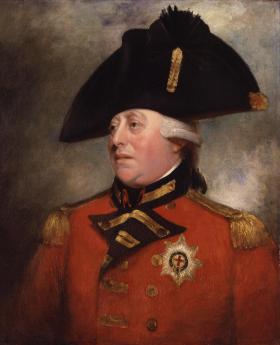
|
| King George III |
BECAUSE America had recently revolted to rid itself of King George III, the Constitutional framers of 1787 sought to construct a government forever free from one-man rule. Inefficiency could be accepted but central dictatorial power, never. It is unrealistic however to expect a wind-up toy to keep working forever, and our Constitution creates the same worry. After two centuries, some chinks have appeared.
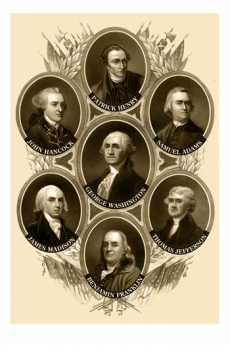
|
| Founding Fathers |
Political parties existed in 18th Century England and Europe, but the American founding fathers seem not to have worried about them much. Within ten years of Constitutional ratification, however, Thomas Jefferson had created a really partisan party which naturally provoked the creation of its partisan opposite. James Madison was slowly won over to the idea this was inevitable, but George Washington never budged. Although they were once firm friends, when Madison's partisan position became clear to him, Washington essentially never spoke to him again. Andrew Jackson, with the guidance of Martin van Buren, carried the partisan idea much further toward its modern characteristics, but it was the two Roosevelts who most fully tested the U.S. Supreme Court's tolerance for concentrating new powers in the Presidency, and Obama who recognized that the quickest way to strengthen the Presidency was to weaken the Legislative branch.
Dramatic episodes of this history are not central to present concerns, which focuses more on the largely unnoticed accumulations of small changes which bring us to our present position. Wars and economic crises induced several presidents, nearly as many Republicans as Democrats, to encourage migrations of power advantage which never quite returned to baseline after each crisis. Primary among these migrations was the erosion of the original assumption of perfect equality among individual members of Congress. A new member of Congress today may tell his constituents he will represent them ably, but when he arrives for work he is figuratively given an office in the basement and allowed to sit on empty packing cases. This is not accidental; the slights are intentional warnings from the true masters of power to bumptious new egotists, they will get nothing in their new environment unless they earn it. Not a bad idea? This schoolyard bullying is a very bad idea. If your elected representative is less powerful, you are less powerful.
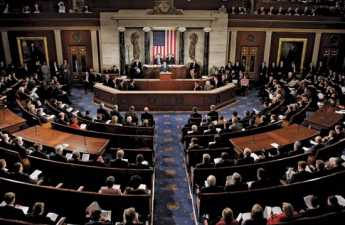
|
| Houses of Congress |
Partisan politics begins with vote-swapping, evolves into a system of concentrating the votes of the members into the hands of party leaders, and ultimately creates the potential for declaring betrayal if the member votes his own mind in defiance of the leader. The rules of the "body" are adopted within moments of the first opening gavel, but they took centuries to evolve and will only significantly change direction on those few occasions when newcomers overpower the old-timers, and only then if some rebel among the old timers takes the considerable trouble to help organize them. In the vast majority of cases, after adoption, the opportunity to change the rules is then effectively lost for two years. Even the Senate, with six-year staggered terms, has argued that it is a "continuing body" and need not reconsider its rules except in the face of a serious uprising on some particular point. Both houses of Congress place great weight on seniority, for the very good purpose of training unfamiliar newcomers in obscure topics, and for the very bad purpose of concentrating power in "safe" districts where party leaders are able to exercise iron control of the nominating process. Those invisible bosses back home in the district, able to control nominations in safe districts, are the real powers in Congress. They indirectly control the offices and chairmanships which accumulate seniority in Congress; anyone who desires to control Congress must control the local political bosses, few of whom ever stand for election to any office if they can avoid it. In most states, the number of safe districts is a function of controlling the gerrymandering process, which takes place every ten years after a census. Therefore, in most states, it is possible to predict the politics of the whole state for a decade, by merely knowing the outcome of the redistricting. The rules for selecting members of the redistricting committee in the state legislatures are quite arcane and almost unbelievably subtle. An inquiring newsman who tries to compile a fifty-state table of the redistricting rules would spend several months doing it, and miss the essential points in a significant number of cases. The newspapers who attempt to pry out the facts of gerrymandering are easily gulled into the misleading belief that a good district is one which is round and compact, leading to a front-page picture showing all districts to be the same physical size. In fact, a good district is one where both parties have a reasonable chance to win, depending for a change, on the quality of their nominee.
So that's how the "Will of Congress" is supposed to work, but the process recently has been far less commendable, and in fact, calls into dispute the whole idea of a balance of power between the three branches of government. We here concentrate on the Health Reform Bill ("Obamacare") and the Financial Reform Bill ("Dodd-Frank"), which send the same procedural message even though they differ widely in their central topic. At the moment, neither of these important pieces of legislation has been fully subject to judicial review, so the U.S. Supreme Court has not yet encumbered itself with stare decisis of its own creation.
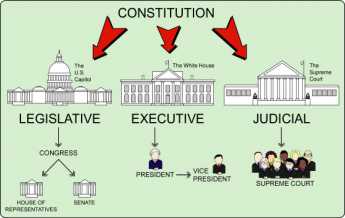
|
| Three branches of government |
In both cases, bills of several thousand pages each were first written by persons who if not unknown, are largely unidentified. It is thus not yet possible to determine whether the authors were affiliated with the Executive Branch or the Legislative one; it is not even possible to be sure they were either elected or appointed to their positions. From all appearances, however, they met and organized their work fairly exclusively within the oversight of the Executive Branch. Some weighty members of the majority party in Congress must have had some involvement, but it seems a near certainty that no members of the minority party were included, and even comparatively few members of highly contested districts, the so-called "Blue Dogs" of the majority party. It seems safe to conjecture that a substantial number either represent special interest affiliates or else party faithful from safe districts with seniority. The construction of the massive legislation was conducted in such secrecy that even the sympathetic members of the press were excluded, and it would not be surprising to learn that no person alive had read the whole bill carefully before it was "sent" to Congress. It's fair to surmise that no member of Congress except a few limited members of the power elite of the majority party were allowed to read more than scattered fragments of the pending legislation in time to make meaningful changes.
The next step was probably more carefully managed. No matter who wrote it or what it said, a majority of the relevant committees of both houses of Congress had to sign their names as responsible for approving it. Because of the relatively new phenomenon of live national televising of committee procedure, the nation was treated to the sight of congressmen of both parties howling that they were only given a single day to read several thousand pages of previously secret material -- before being forced to sign approval of it by application of unmentioned pressures enabled by the rules of "the body". When party members in contested districts protested that they would be dis-elected for doing so, it does not take much imagination to surmise that they were offered various appointive offices within the bureaucracy as a consolation. As it turned out, the legislation was only passed narrowly on a straight-party vote, so there can be a considerable possibility of its likely failure if the corruptions of politics had been set aside, with members voting on the merits. Nevertheless, since this degree of political hammering did result in a straight-party vote, it leaves the minority party free to overturn the legislation when it can. The prospect of preventing an overturn in succeeding congresses seems to be premised on "fixing" flaws in the legislation through the issuance of regulations before elections can open the way to overturn of the underlying authorization. Legislative overturn, however, is very likely to encounter filibuster in the Senate, which presently requires 40 votes. Even that conventional pathway is booby-trapped in the case of the Dodd-Frank Law. The Economist magazine of London assigned a reporter to read the entire act, and relates that almost every page of it mandates that the Executive Branch ("The Secretary shall") must take rather vague instructions to write regulations five or ten times as long as the Congressional authorization, giving the specifics of the law. The prospect looms of vast numbers of regulations with the force of law but written by the executive branch, emerging long after the Supreme Court considers the central points, years after the authorizing congressmen have had a chance to read it, and well after the public has rendered final judgment with a presidential election. The underlying principle of this legislation is the hope that it will later seem too disruptive to change a law, even though most of it was never considered by the public or its representatives.
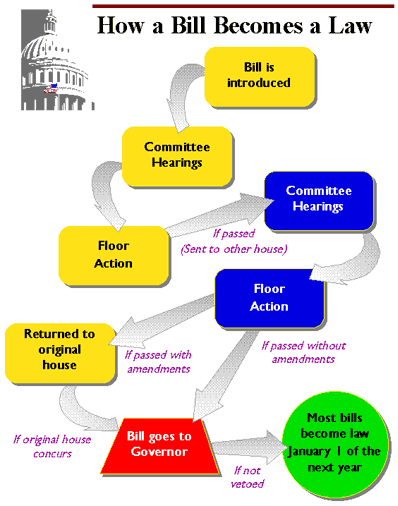
|
| Bill become a Law |
The "regulatory process" takes place entirely within the Executive branch. Congress passes what it terms "enabling" legislation, containing language to the effect that the Cabinet Secretary shall investigate as needed, decide as needed, and implement as needed, such regulations as shall be needed to carry out the "Will" of Congress. Since the regulations for two-thousand-page bills will almost certainly run to twenty thousand pages of regulations with the force of law, the enabling committee of Congress will be confronted with an impossible task of oversight, and thus will offer few objections. The Appropriations Committees of Congress, on the other hand, are charged with reviewing every government program every year and have the power to throttle what they disapprove of, by the simple mechanism of cutting off the program's funds. Members of the coveted Appropriations Committees are appointed by seniority, come from safe districts, and are attracted to the work by the associated ability to bestow plums on their home districts. By the nature of their appointment process, unworried by the folks back home but entirely beholden to the party bosses, they have the latitude to throttle anything the leadership of their party wants to throttle badly enough. The outcome of such take-no-prisoners warfare is not likely to improve the welfare of the nation, and therefore it is rare that partisan politics are allowed to go so far.
The three branches of government have become unbalanced. These bills were almost entirely written outside of the Legislative branch, and the ensuing regulations will be written in the Executive branch. The founding fathers certainly never envisioned that sweeping modification will be made in the medical industry and the financial industry, against the wishes of these industries, and in any event without convincing proof that the public is in favor. This is what is fundamentally wrong about taking such important decisions out of the hands of Congress; it threatens to put the public at odds with its government.
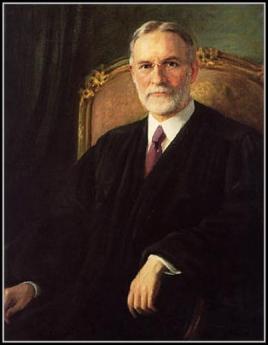
|
| Justice George Sutherland |
There is no need to go further than this, harsher words will only inflame the reaction further than necessary to justify a pull-back. And yet, the Supreme Court would do us mercy if it doused these flames; the Supreme Court needs a legal pretext. May we suggest that Justice George Sutherland, who sat on the court seventy years ago, may have sensed the direction of things, short of using a particular word. Justice Sutherland recognized that although it is impractical to waver from the principle that ignorance of the law is no excuse, it is entirely possible for a person of ordinary understanding to read law in its entirety and still be confused as to its intent. He thus created a legal principle that a law may be void if it is too vague to be understood. In particular, a common criminal may be even less able to make a serious analysis. Therefore, at least in criminal cases, a lawyer may well be void for vagueness. In this case, we are not speaking of criminals as defendants or civil cases of alleged damage of one party by a defendant. Here, it is the law itself which gives offense by its vagueness, and Congress which created the vagueness is the defendant. Since we have just gone to considerable length to describe the manner in which Congress is possibly the main victim, this situation may be one of the few remaining ones where a Court of Equity is needed. That is, an obvious wrong needs to be corrected, but no statute seems to cover the matter. The Supreme Court might give some thought to convening itself as a special Court of Equity, on the special point of whether this legislation is void for vagueness.
We indicated earlier that one word was missing in this bill of particulars. That would be needed, to expand the charge to void for intentional vagueness, an assessment which is unflinchingly direct. It suggests that somewhere in at least this year's contentious processes, either the Executive Branch or the officers of the congressional majority party, or both, intended to achieve the latitude of imprecision, that is, to do as it pleased. Anyone who supposes the general run of congressmen voluntarily surrendered such latitude in the Health and Finance legislation, has not been watching much television. Given the present vast quantity of annually proposed legislation, roughly 25,000 bills each session, the passage of a small amount of vague legislation might only justify voiding individual laws, whereas an undue amount of it might additionally justify a reprimand. However, engineering laws which are deliberately vague might rise to the level of impeachment.
How Could We Improve State Legislatures?
NEARLY every student of government agrees, the state government is the weakest part of the American system. Almost every academic or federal congressman, at least, seems to hold that belief, while almost any lawyer would prefer to have his case in Federal court rather than before a state judge. Although the followers of Thomas Jefferson kept the nation in an uproar for forty years pursuing his notion of government identical with the will of the people, the public opinion he prized nevertheless remains scornful of state government. Such scorn by itself can undermine legislative quality, creating a destructive cycle.

|
| Small Town |
Students of government point to instability and unpredictability as main features of concern about state government. The legal profession values a central principle, called stare decisis: Leave the Law Alone. Stability, or order is desired so highly that dictatorship, corruption, and poverty may be tolerated in order to achieve it. Conversely, an inability to predict what is coming next is highly destabilizing, a sign of amateurism at the controls. Any decision is better than no decision, even a bad decision is better than no decision. The public hesitates to act in the face of indecisive governance, and dynamism drains from the environment. Most of the time it doesn't make much difference what a rule says as long as it is emphatic and prompt. And it's usually the case that bad decisions are quickly reversed. Test it yourself: how much difference does it make whether a one-way street runs East or West? But it would make a considerable difference if almost any street changed Eastward to Westward to Eastward again, several times capriciously. Suppose someone did make a bad mistake: Eastward to Westward and back to Eastward again. Everyone can now see that Westward was a dumb idea, you bonehead. It will be a very long time before anyone tries that, again.
A second general characteristic of state government is the location in a small remote town. The capital of Michigan is in Lansing, not Detroit. In New York, it is in Albany, not New York City, and in Pennsylvania, it moved from Philadelphia to Harrisburg. Even in little Delaware, it is in Dover, in Maryland, it is in Annapolis rather than Baltimore. And so through most of the fifty states, we see the same pattern. No doubt it could be argued: getting away from big-city bosses and political machines is positive, and stretching a network of highways through the open countryside to the new capital is a source of real estate development for the state. But it definitely creates weakness of the governing system to locate it in towns that have little newspaper coverage, no think tanks, few universities, and even poor airports, school systems, museums, and civil society. These are generally one-industry towns, where the children of the bureaucracy all go to school with each other, along with the offspring of lobbyists. Voices in the past have been raised against the development of a ruling class, as might have been seen in Potsdam outside of Berlin and similar political suburbs. But we have just as surely developed a bureaucratic subclass in Bethesda, Maryland and Alexandria, Virginia. No doubt there are many other similar clusters, in other states. Where the children of bureaucrats are clustered in the schools near the Washington Post and the National Journal it can be argued they know the inside game of politics, as well as the children of Boston, know the inside baseball of the Red Sox, and there is a certain value to developing such a political artisan class. But in the vast majority of the country, the dominant problem is that the voters of the state have not the faintest idea of how their state government is functioning. The children of bureaucrats may still learn at the dinner table how to adopt "Yes, Minister" behavior or how to find lifetime bureaucratic jobs with accidentally high fringe benefits. The big flaw is the rest of the state does not realize the smallest part of how prevalent such behavior is in the capital. If the politician who is caught in a scandal is largely unknown to the general public, it is an advantage to the political class. With less notoriety, there is less scandal, possibly even lighter punishment from judges he has been involved in appointing. Rising above this sort of sorry behavior, the quality of legislation is surely diminished when there is diminished fame for doing a good job, diminished scorn for incompetence.
To a certain extent, this pressure for mediocrity is augmented by the reduced importance of the subject material. The federal government is involved in foreign policy and monetary issues Constitutionally forbidden to the state legislature. Even at the bottom of the hierarchy of public notice, the activities of mayors and city councils have a more direct effect of the lives of the local voter than state government does, with importance shaved off at both the top and the bottom. Such activities really can possibly afford to be relegated to some rural small town with nothing to do except play poker and drink in the bar of the local hotel; it's a question which is a cause, which is the effect. The Constitution provides that the Federal government shall be limited to a dozen specified activities, while everything else is governed by the states. Unfortunately, two hundred years of chipping away at the wall separating two governments of limited powers have left the states with little scope to govern anything substantive except the insurance industry. That does not prevent most state governments from considering more than two thousand bills a session, but these are matters of little import, boring, boring.

|
| Big City |
The Progressive Movement of the early Twentieth century saw much the same problems, being handled by much the same sort of people; but they over-reacted to it. Like most reform movements, the Progressives wanted to make a big splash and then go home. A century later, it is difficult to assess how outrageously corrupt the Senatorial process may or may not have been at that time in the past. Somehow, the public became convinced the U.S. Senate was a terribly rotten organization because of the terribly rotten selection system for U.S. Senators. Consequently, the Seventeenth Amendment passed with little fanfare, taking the selection process away from "the states" and giving it to a statewide popular election. In states with large urban political machines, this change meant giving the nominating process to big-city bosses, taking it away from the legislatures. That is definitely a distinction without much difference. Most big-city political bosses are content to select obedient hacks for nomination to the legislature, but this is the source of most rotten boroughs, gerrymandering, corruption, and mediocrity. In the areas of rural machine politics, the boss himself is more commonly attracted to the appointive legislative jobs. In New Jersey, the election law prohibits more than small campaign contributions to legislators but permits unlimited contributions to the county boss. Either way, the progressive reform of 1913 has not had much progressive effect. One thing is very certain. When the method of selection of the state's U.S. Senator is left to the legislature, the resulting Senator is pretty certain to be a current member of the Legislature. And in the instant you aspire to be U.S. Senator, it becomes very clear you will greatly enhance your chances if you first run for the legislature. There were once likely to be half a dozen senatorial aspirants within the Legislature at any one time, so there was an appreciable improvement in the quality of the Legislatures. True, there was probably more grand-standing and maybe even vote-swapping in return for assistance on the Senatorial seat selection. But there was also much more attention paid in return to the state's interests, by the U.S. Senate. The state's voice on the national scene was considerably louder. The value of a legislative seat and the later experience it provided were much enhanced by possessing the power of selecting a U.S. Senator.
A measured assessment of the effects of the Seventeenth Amendment is long overdue. My own view is that ripping the selection process away from the state legislatures and substituting a second popularly elected national legislative house, was both an over-reaction and a careless gesture without much improvement. Because vested interests have been created, it is now nearly useless to ask the present Congress to study the matter. We have to hope that some rich private citizen will see the need for a serious study of these issues, and both fund the effort as well as leave it alone. If it gets captured by ideologues, it will require a second study, or maybe even a third.
And finally, we get to Earl Warren. former governor of California, and President Eisenhower's choice for Chief Justice of the Supreme Court of the United States. Eisenhower later once referred to the appointment as the worst decision he ever made. Two decisions are said to have been his pets: Baker v. Carr and Reynolds v. Sims. Prior to these two decisions, it was really only possible to gerrymander Congress and the fifty state Legislatures. The U.S. Senate and the various state Senates were elected by geographic boundaries, and couldn't be gerrymandered. Tracing back to a corridor conversation between John Dickinson and James Madison, Dickinson had caucused with the other small states and was in a position to block almost any Constitutional Provision at the Convention. He used words to the effect of, "Do you want a Constitution, or don't you?" and went on to describe his total unwillingness to allow big states to dominate small ones. Out of this, Ben Franklin cobbled a compromise of a two-house Legislative Branch. To pass, any legislation would require the approval of both houses. The House of Representatives would have proportional representation, while in the Senate each state would have two senators, regardless of its population. Eventually, almost every state Legislative branch followed this pattern, although it was not a provision of the Constitution.
The hidden dissention in 1789 was over slavery, but Dickinson was a shrewd and experienced lawyer. He knew human nature, and the best example of the power of his insight has later emerged as California has become the largest state. Every new insurance design first seeks to conform to California laws, because it's expensive to launch a new project, and you might as well assure yourself of conforming to the rules of the largest market, first. The smallest state, Delaware, was not about to be pushed around like that, even on many unrelated issues. But centuries later, Earl Warren had learned the same lesson in reverse and lunged for it when he became Chief Justice. Using the argument of "equal justice", he forced 49 state Senates to adopt proportional representation, just like the other house in their branch. New Jersey, which I know best, is typical in being forced by this decision to change its Senate from one vote per county to voting by population. The subtlety was that both houses of state legislatures became dominated by big-city machines and hence were capable of being gerrymandered. They thus gained control of the nomination process, and gerrymandering nation-wide has assumed the posture of machine politics dominating the selection of candidates. It's certainly true that in the Pennsylvania legislative process, you can regularly observe party hacks drive up, and vote on the floor in accordance with a little card which the "leadership" hands them as they step on the floor. The beauty part of this is that decades later, most citizens haven't a clue what had happened.
What Is the Purpose of a National Constitution?

|
| 13th Century Magna Carta |
NATIONAL constitutions are mainly an outgrowth of the 18th Century Enlightenment, even though similar features are to be found among ancient legal codes. Those who trace the origins of the American constitution to the 13th Century Magna Carta will usually point to a central sentence of clause 39:
No free man shall be arrested, or imprisoned, or deprived of his property, or outlawed, or exiled, or in any way destroyed, nor shall we go against him or send against him, unless by legal judgement of his peers, or by the law of the land.

|
| American Constitution |
That's a pretty good beginning, a good example of a needed legal principle, but unrecognizable as what we would today call a Constitution. It states what a government may not do, but does not define the nature of a government which does the job best. Nor do even the many Enlightenment philosophers of government take that final step of outlining where their notions should take us until the American Constitution had been written and defended in the Federalist papers. Nowhere among the writings of Montesquieu (The Spirit of the Laws, 1748), Catherine the Great (Nakaz, Instructions to the All-Russian Legislative Commission, 1767), Diderot (Observations About Nakaz, 1774), James Madison (1787), John Dickinson(1763) or Gouverneur Morris(1787) can there be found much tightly described definition of a constitution. Certainly, there is no definition within the writings of Adam Smith if we look for rule-making among Enlightenment thinkers whose ideas were influential on the 1787 Philadelphia document. The American constitution was the product of many minds, before and after 1787. The outlines of its final form converged, and emerged, from the Constitutional Convention of the summer of 1787, with Gouverneur Morris as the penman of record. To him, we certainly owe its succinctness, which is the main source of affection for the document. That probably understates matters; in his diary of the secret meetings, James Madison records that Gouverneur Morris rose to speak about 170 times, more than any other delegate. Lots of thought and debate; ultimately, few words.
The Elizabethan Sir Francis Bacon has the greatest claim on devising a theory of law and law-making in the Anglosphere tradition. But his elegant modification of Galileo's scientific method, the English Common Law, is more a methodology for creating good laws than an outline of a nation's legal principles. Anyway, tracing the American Constitution back to an underlying British one tends to stumble when the British Constitution fails to meet a definition which would include our own. The British Constitution is said to be "unwritten" to the degree it is a consensus of revered documents. It can be amended by Parliament at will, has a variable history of defining just who is covered by it, and in order to define constitutional principles seems to rely on sentences extracted from difficult context. If the two constitutions had been written and compared at the same time, one would say the British had sacrificed coherence out of respect for tradition. In fairness, some features of the American constitution are also perhaps unnecessary for every constitution, but by surviving as the oldest constitution of the modern form, have become its model. That would be:
A set of principles governing the legitimacy of a nation's laws, and firmly standing above them. It defines its own domain, geographically and by the membership of a defined citizenry. Except as otherwise defined, it supersedes all other governance within its domain. It defines and defends its own origins. It includes a description of how to amend it, which is intentionally infrequent and difficult. It goes on to outline the structure of the laws it regulates, with subtle modifications made to channel the type of power structure which will govern.
In the American case, history and culture generated several other instabilities so central they justified heightening the difficulty to amend them to a Constitutional level, thus conferring undisputed dominance over competing principles of governance. That would be:
A separation of government powers weakened all potentially offending branches of government, and thus enhanced citizen liberty. Separation of church from state, for like purpose. A right of citizens to bear arms, to strengthen citizens' defense against internal or external attack, and perhaps also warning that revolt must be possible, even endorsed, as some final extremity of protection for citizen sovereignty.

|
| Russia's Catherine the Great |
It enhances our comprehension to contrast the outcomes of competing 18th Century implementations of the Constitution idea. Russia's Catherine the Great proposed a constitution steeped in the traditions of the Enlightenment but ultimately designed to define and strengthen the role of the monarch. Denis Diderot her French protege recoiled at this viewpoint, substituting other views resembling those of Jean Jacob Rousseau. He opened Observations About Nakaz his commentary to the Queen, with the following declaration:
There is no true sovereign except the nation; there can be no true legislator except the people. Whether looking back to the English Civil War or forward to future disputes between the Executive and Legislative branches, it makes clear the Legislative branch was dominant, with the Executive branch acting as its agent.

|
| Denis Diderot |
With this ringing warcry, the French model nevertheless ushered in the extremes of the Terror, the Guillotine, and the Napoleonic conquests. The consequences of the French constitution undermined world confidence in the benevolence of public opinion, at least deeply confounding those for whom the democratic rule was not totally discredited. Once more new life was breathed into allegiance for the monarchy, military rule, and dictatorship. Public opinion, it seemed, was not either invariably benign or comfortably far-seeing. The noble savage, mankind naked of tainted civilization, was not necessarily wise or worthy of trust. Edward Gibbons, the 1776 author of The Decline and Fall of the Roman Empire was pointing out where it all might lead if we completely believed in the collective goodness of the human condition. At the least, the failure of the French Revolution complimented the viewpoint of the Scottish philosopher, Adam Smith, who also in 1776 emphatically urged a switch in that reliance toward a sense of enlightened self-interest, as follows:
It is not from the benevolence of the butcher, the brewer, or the baker, that we can expect our dinner but from their regard to their own interest.

|
| Terror, the Guillotine, |
It is not surprising that Diderot rejected the Leibniz view of things that "All is for the best, in this best of all possible worlds." And, in view of his dependence on Catherine, not surprising he did not publish his rejection of it until 1823. Thomas Jefferson was in France as ambassador during the time of the American Constitutional Convention, fearing to confront George Washington; and likewise keeping his conflicting views private for several years. Eventually, they surfaced in the creation of an anti-Federalist political party along with the conflicts which kept the new nation in a turmoil for the following forty years. It is surely a testimony to the strength of the Constitution's design that the country was able to shift between such extreme governing philosophies but still hold together without changing the governing statement of purpose. Indeed, it is plausible to contend that our two political parties still continuously debate the useful tension between these two differing opinions.
Minimum Wage Fangdoodle
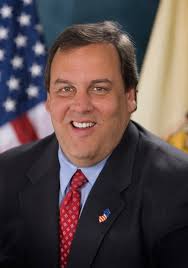
|
| Governor Chris Christie |
The November 2013 elections have been widely accepted to be a spectacular win for New Jersey Governor Chris Christie, suddenly making him a presidential front-runner for 2016. The only other significant election was a close win in the Virginia gubernatorial race for a fund-raising crony of Bill Clinton over the Attorney General who started the Supreme Court Case over Obamacare. In the view of the news media, there were only two elections in this off-year -- a landslide in New Jersey, and a dead heat in Virginia, for Governor.
Well, as a matter of fact, there was also an election in New Jersey for all of the members of the legislature, which means that I was running against the Democratic majority leader in the 6th Legislative District. I got 19,000 votes, but I needed more to win. At least in my family, it was a big event, particularly since no one else in New Jersey contributed a dime to my campaign, and while Governor Christie may have whispered a few encouraging words to me, there was no evidence of his assistance. But you can forget about that, too, because this election was really about the minimum wage.
The first inkling I got that something was up was receiving a sample ballot, three days before the election, where there was a referendum question about the minimum wage that no one had told me about, although it could scarcely have been a secret to get it on the ballot. And secondly, on election day there was scarcely any evidence of campaigning for Democrat candidates except for a few yard signs, but literally, dozens of campaign workers poured into the subway stations, handing out great volumes of campaign literature about the minimum wage. Even that went past me unnoticed, because who in the world would vote for a proposal which would increase unemployment during a severe recession? When I expressed the same sentiment to my Democratic friends, I was surprised to discover they all knew about it in advance. In retrospect, that was a fairly good indication that the Internet had selectively urged support of this proposition to the party faithful, but had not said one word in campaigning for it. It won endorsement by a heavy margin, as things soon turned out. What's worse, what had been endorsed by referendum had been to amend the constitution to this effect, automatically indexing it to the cost of living. It's going to be pretty hard to reverse that since all constitutions have been written to make it very hard to amend them.
p> In the week after the election, I notice that several other states have been considering raising the minimum wage. An article appeared on the editorial page of the New York Times arguing that research showed there was no evidence that raising the minimum wage caused unemployment, and a few days later, Paul Krugman had a learned column on the Times editorial page to the effect that smart people all knew there was no reason to expect unemployment from raising the minimum wage, and only the hopelessly ignorant rubes would imagine there was reason to think so. Having spent some time with editorial writers, it seemed pretty evident to me that there was a nationally coordinated effort to convert this into a truism, accepted so widely it would be futile to argue against it. When it is also possible to see the existence of a campaign to impose a maximum wage (and not merely in Switzerland, where it was defeated on a ballot), the trajectory of a rising minimum wage meeting a falling maximum wage easily led to conjectures that what was really afoot was a campaign to take wages out of the marketplace. Or was that really the goal?
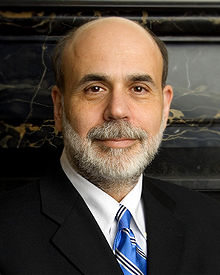
|
| Ben Bernanke |
For months, the Federal Reserve Chairman has been emphasizing that the Fed must obey two mandates: to maintain price stability and to minimize unemployment. Meanwhile, the dirty little secret among economists has been that unemployment is the main obstacle to inflation in the face of a massive enlargement of the money supply. Unemployment is currently at 7.1% and falling, while the Fed has lifted the veil of "transparency" to reveal it made a promise in double-speak to start selling some of the bonds it issued to combat the recession when unemployment reaches 6.5%. As time has gone on, Mr. Bernanke has seemed to back away from that promise. He is not so sure that unemployment is a good measure of unemployment, other measures may be a better measure of what we are driving at. He never meant to start selling bonds when unemployment reached 6.5%, he only meant that he might reduce the number he planned to buy. He never meant to make a promise, he only was being transparent about the current thinking of the Board. And anyway, Janet Yellen will take over his job in a month, so you can't very well bind your successor to do anything at all. What's this tap-dancing all about?
Well, it simply won't do, to suggest that the Federal Reserve isn't as independent of politics as it pretends to be. But everyone noticed that the stock market had a bad fainting spell when he suggested a few months ago that the Board had been discussing the matter; just imagine what it would do if he actually made a promise to act, let alone actually taking an action. By itself, such an announcement would probably send interest rates on a rise toward normal levels. The stock market mostly anticipates the future, so it would jump ahead of whatever action was taken. Since the United States is now the largest debtor on earth, a rise of interest rates would immediately add huge amounts to the current deficit and the projected national debt. The stock market would almost surely drop, possibly severely, in response to such commotion in the debt markets. And the national economy would certainly feel the deflationary effect of such activity in the financial markets, sending markets even lower. Fear of such a reaction would surely persist longer than the real need for monetary easing, making the resultant inflation even worse than it had to be.
 Is it possible the Obama Administration prefers a little extra unemployment, to risking a stock market crash before a coming election? 
|
| Minimum Wage Uproar |
In an era of desperate experimentation with the simultaneous solutions of several problems at once, perhaps the best conservative response to this paper is to seek ways to relax its inflexibility. The political process, particularly the amendment of state constitutions, is a lengthy and cumbersome impediment to agile management of the economy. It is fairly unlikely that a secret springing of a referendum trap can be repeated. The greater risk is that we will know what should be done, but become unable to do it quickly.
Meanwhile, the politicians are designing things and politicians like things simple. The Republican solution is to pass a minimum wage, but keep its benefit slightly below the entry-level wage; they get credit for passing it, but it has almost no applicability. The Democrat approach is to make a big noise about passing a meaningless bill, promising they will make it up with off the balance sheet entitlements, like health care and college tuition. Either way, usually nothing much happens after the election is over.
Enforcing the Constitution: Civil Monetary Penalties (CMP)

|
| Founding Fathers |
The 1787 Constitution created three branches of government along with their defined powers but described no remedy for a branch overstepping its boundaries. Gradually, a system evolved for declaring some laws unconstitutional, one by one, clarifying individual issues along the way. By contrast, the founding fathers viewed the President as an agent of Congress, expecting Congress to devise controls if needed. George Washington had an intense distaste for monarchs, and eight years as Commander in Chief had exposed no taste for conflict with the Continental Congress. Unfortunately, this has proven to be unusual for Presidents, especially as popular sovereignty appears to expand the Presidential mandate. Moreover, Washington himself developed more friction with Congress during his two terms as President.
In retrospect, the main factor behind Presidential restlessness is the experience of misinterpreting the meaning of a broader electoral mandate, which can more properly be traced to hasty repair of the defects of the 1800 election process. Experience has shown that while ignoring rules invites anarchy, the impeachment of a President usually seems too drastic a remedy for unwelcome innovation while impeaching the whole Legislative Branch for failure to supervise in a general way, is incomprehensible. The President needs some sort of supervision. While the original intent was to have Congress do the supervising, the Supreme Court is now probably better suited for judging the issue of unconstitutional behavior, except for the awkwardness that the President appoints the Supreme Court. These are the simple ingredients of a solution, preferably unwritten and revolving around conferring special "standing" in special circumstances.
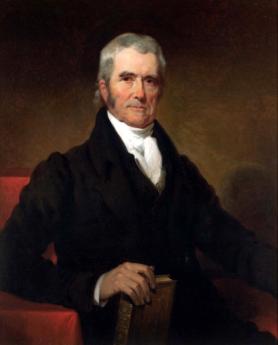
|
| Chief Justice, John Marshall |
At present, grievances tend to accumulate until someone acquires "standing" by being injured. At present it is generally true a grievance scarcely matters if no one is injured, but the exception is the lack of redress for injury to the Constitution, whereby everyone may be injured. Furthermore, actual experience with creeping boundary encroachment has mostly proved to be nuanced, rather than confrontational, gradual rather than abrupt. The descriptive example is that of a frog in a gradually heated pan of water, whereby the frog is cooked faster than he realizes he is in danger. Otherwise, the courts have evolved an unspecified balance which has proved remarkably serviceable.
It took thirty years for John MarshalI to formulate the general approach needed. In Marbury v. Madison , his first action after becoming Chief Justice, John Marshall suggested a writ of Mandamus (i.e. "We command...") from the Court might well be the first step in what he coyly described as only a hypothetical situation. Only lawyers were expected to recognize fully that If the President ignored the writ, then the grounds for impeachment might escalate, with the President forced into the role of flouting a decision of the Court. Regardless of how it stood on the original issue, the public would likely support a Court in performing its duty to make difficult decisions.
One way or another, the national issue would become one of whether the nation wished to continue with its Constitution; Marshall had only outlined the steps the process would probably take. At several points along the way, the Chief Justice would have a chance to back off. But Marshall's lifelong hatred of his cousin Thomas Jefferson was so well known there was little doubt he was serious. Knowing of his cousin's hatred for him, President Jefferson let the matter drop; subsequent Presidents followed his example. Generations of lawyers have studied this case and pondered its implications. The solution to the problem of extending it from unconstitutional laws to unconstitutional behavior, probably already exists in many minds.
| Posted by: Stuart | Dec 5, 2013 12:42 AM |
26 Blogs
Advanced Placement Gains Attackers and Defenders
 College admission is so competitive it creates vested interests. Everything is questioned, even the value of college itself.
College admission is so competitive it creates vested interests. Everything is questioned, even the value of college itself.
Deconstructing Higher Education, Home Design, and Medical Care.
Working topic: Three major consumer categories are unnecessarily expensive. Higher education, housing, and medical care all suffer from obsolete designs, which we cling to because of resistance by producer groups. What may be at stake in all three is poorly organized protection for intellectual property, which leads to rent-seeking.
Philadelphia Chromosome
 Just about everybody has 46 chromosomes in every cell in the body. Some people have more than that: they have the Philadelphia Chromosome.
Just about everybody has 46 chromosomes in every cell in the body. Some people have more than that: they have the Philadelphia Chromosome.
The Hospital That Ate Chicago (1)
 A flash of inspiration gets a medical article published.
A flash of inspiration gets a medical article published.
Health Savings Accounts
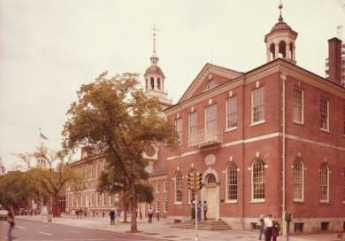 In late 2003, Congress passed and the President signed, legislation enabling tax exemptions for contributions to Medical Savings Accounts. This monumental reform was included in a law which created a number of Medicare prescription drugs benefits which received more attention in the press. Such accounts were renamed Health Savings Accounts, which was the original terminology in 1980 when John McClaughry of Vermont and George Ross Fisher of Pennsylvania, shortly joined by Michael Smith of Louisiana, first introduced the concept.
In late 2003, Congress passed and the President signed, legislation enabling tax exemptions for contributions to Medical Savings Accounts. This monumental reform was included in a law which created a number of Medicare prescription drugs benefits which received more attention in the press. Such accounts were renamed Health Savings Accounts, which was the original terminology in 1980 when John McClaughry of Vermont and George Ross Fisher of Pennsylvania, shortly joined by Michael Smith of Louisiana, first introduced the concept.
Medicare/Health Savings Accounts Legislation
What Every Voter Needs to Know
Three Revolutions at Once, Maybe Four
 Asking the cause of the American Revolutionary War may be a little simplistic; civil wars pop up, all over the place, all the time. The more important question to ask, is why did this American Revolution have such a dramatic effect on the whole world?
Asking the cause of the American Revolutionary War may be a little simplistic; civil wars pop up, all over the place, all the time. The more important question to ask, is why did this American Revolution have such a dramatic effect on the whole world?
Haddonfield Blooming Outdoors, Year-Round

Paying For College - II
 As college education strives to be universal, forcing a few prosperous students to subsidize many needy ones becomes unsustainable. Colleges must devise better tuition systems before somebody else does it for them.
As college education strives to be universal, forcing a few prosperous students to subsidize many needy ones becomes unsustainable. Colleges must devise better tuition systems before somebody else does it for them.
Proposal: A Second Federal Reserve
 Henry Kaufman recently made a number of wise observations about the monetary situation, followed by a radical proposal that might be rather hard to implement.
Henry Kaufman recently made a number of wise observations about the monetary situation, followed by a radical proposal that might be rather hard to implement.
Retire Later
 In the social entitlement environment, like the union environment, "givebacks" are never acceptable. But accepting a later retirement age than you planned on is one certainty, utterly beyond debate.
In the social entitlement environment, like the union environment, "givebacks" are never acceptable. But accepting a later retirement age than you planned on is one certainty, utterly beyond debate.
A New Food and Drug Category
 The Food and Drug Act demands that drugs be efficacious and safe. There needs to be a special exemption for drugs that are efficacious but somewhat unsafe.
The Food and Drug Act demands that drugs be efficacious and safe. There needs to be a special exemption for drugs that are efficacious but somewhat unsafe.
State Capitol Think Tanks
 States rights will be neglected as long as state governments remain so second-rate.
States rights will be neglected as long as state governments remain so second-rate.
Longevity Revolution
 Working topic: The addition of thirty years to average life expectancy was unprecedented and largely unnoticed. After a brief celebration of vacation lifestyle for retirees, employers perceived they cannot afford the defined-benefit approach and must switch to defined-contribution pensions as fast as possible; and it gradually dawns on employees that they cannot retire before age 70.
Working topic: The addition of thirty years to average life expectancy was unprecedented and largely unnoticed. After a brief celebration of vacation lifestyle for retirees, employers perceived they cannot afford the defined-benefit approach and must switch to defined-contribution pensions as fast as possible; and it gradually dawns on employees that they cannot retire before age 70.
Selection of Constitutional Rights for the Bill of Rights
 James Madison tried to preserve the Union by allowing states some latitude in enforcing civil rights. Eventually, we got a Civil War, a weakening of state legislatures, massive black migration to northern cities, and the Civil Rights Act. It's all about slavery is hard to eliminate.
James Madison tried to preserve the Union by allowing states some latitude in enforcing civil rights. Eventually, we got a Civil War, a weakening of state legislatures, massive black migration to northern cities, and the Civil Rights Act. It's all about slavery is hard to eliminate.
New Roles For Grandparents
 The present generation of grandparents is inventing new rules.
The present generation of grandparents is inventing new rules.
Gum
 Perhaps we should refer to bubble gum as Santa Ana's revenge.
Perhaps we should refer to bubble gum as Santa Ana's revenge.
Addressing the Flaws of Republics
 We need some local, not national, think tanks. To understand why, it helps to have been elected to something, yourself.
We need some local, not national, think tanks. To understand why, it helps to have been elected to something, yourself.
Rationing, No Matter What You Call It.
 The ethics of healthcare reform concentrate on the ethics of healthcare rationing.
The ethics of healthcare reform concentrate on the ethics of healthcare rationing.
Nanoparticles: The Dwarfs are Coming
 A lot of basic science will have to be revised when we fully understand what happens to particles after they get small enough.
A lot of basic science will have to be revised when we fully understand what happens to particles after they get small enough.
Bonds--Do They Have A Future?
 It's increasingly hard to imagine why investors buy bonds because it's increasingly difficult to imagine an end to inflation.
It's increasingly hard to imagine why investors buy bonds because it's increasingly difficult to imagine an end to inflation.
Political Parties, Absent and Unmentionable
 Our Constitution is much praised for exquisitely balancing power between the three branches of government. It would even be an achievement to require two centuries to find a way to unbalance them.
Our Constitution is much praised for exquisitely balancing power between the three branches of government. It would even be an achievement to require two centuries to find a way to unbalance them.
How Could We Improve State Legislatures?
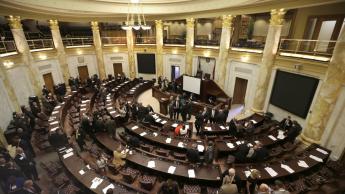 If state legislatures are as bad as their reputation, we ought to be asking questions. Like, how did they get that reputation, and what can improve it?
If state legislatures are as bad as their reputation, we ought to be asking questions. Like, how did they get that reputation, and what can improve it?
What Is the Purpose of a National Constitution?
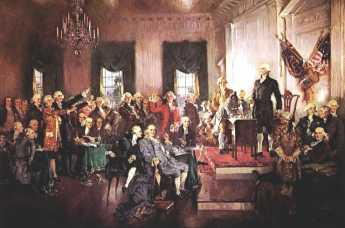 The primary purpose of any Constitution is of course survival. Usually, but not invariably, that means avoiding war with a neighbor which will surely beat you. Having stated what ought to be obvious, the framers of a Constitution need to be careful of the reasons which originally caused the new state to be formed, and also need to avoid provisions which would cause trouble by inciting some different type of governance. These features can be enumerated, but are easily forgotten.
The primary purpose of any Constitution is of course survival. Usually, but not invariably, that means avoiding war with a neighbor which will surely beat you. Having stated what ought to be obvious, the framers of a Constitution need to be careful of the reasons which originally caused the new state to be formed, and also need to avoid provisions which would cause trouble by inciting some different type of governance. These features can be enumerated, but are easily forgotten.
Minimum Wage Fangdoodle
 While no one was looking, mandating a minimum wage turned into a contrivance to maintain low-interest rates.
While no one was looking, mandating a minimum wage turned into a contrivance to maintain low-interest rates.
Enforcing the Constitution: Civil Monetary Penalties (CMP)
 The Constitution does not define penalties if one branch of government oversteps its grant of authority. But starting with writs of mandamus , the U.S. Supreme Court has left the other two branches with little alternative but compliance.
The Constitution does not define penalties if one branch of government oversteps its grant of authority. But starting with writs of mandamus , the U.S. Supreme Court has left the other two branches with little alternative but compliance.